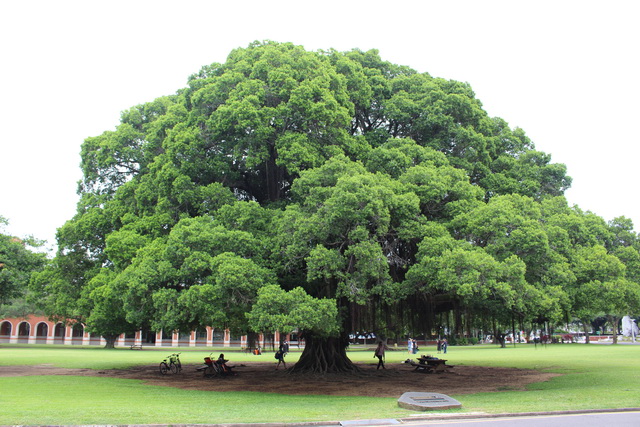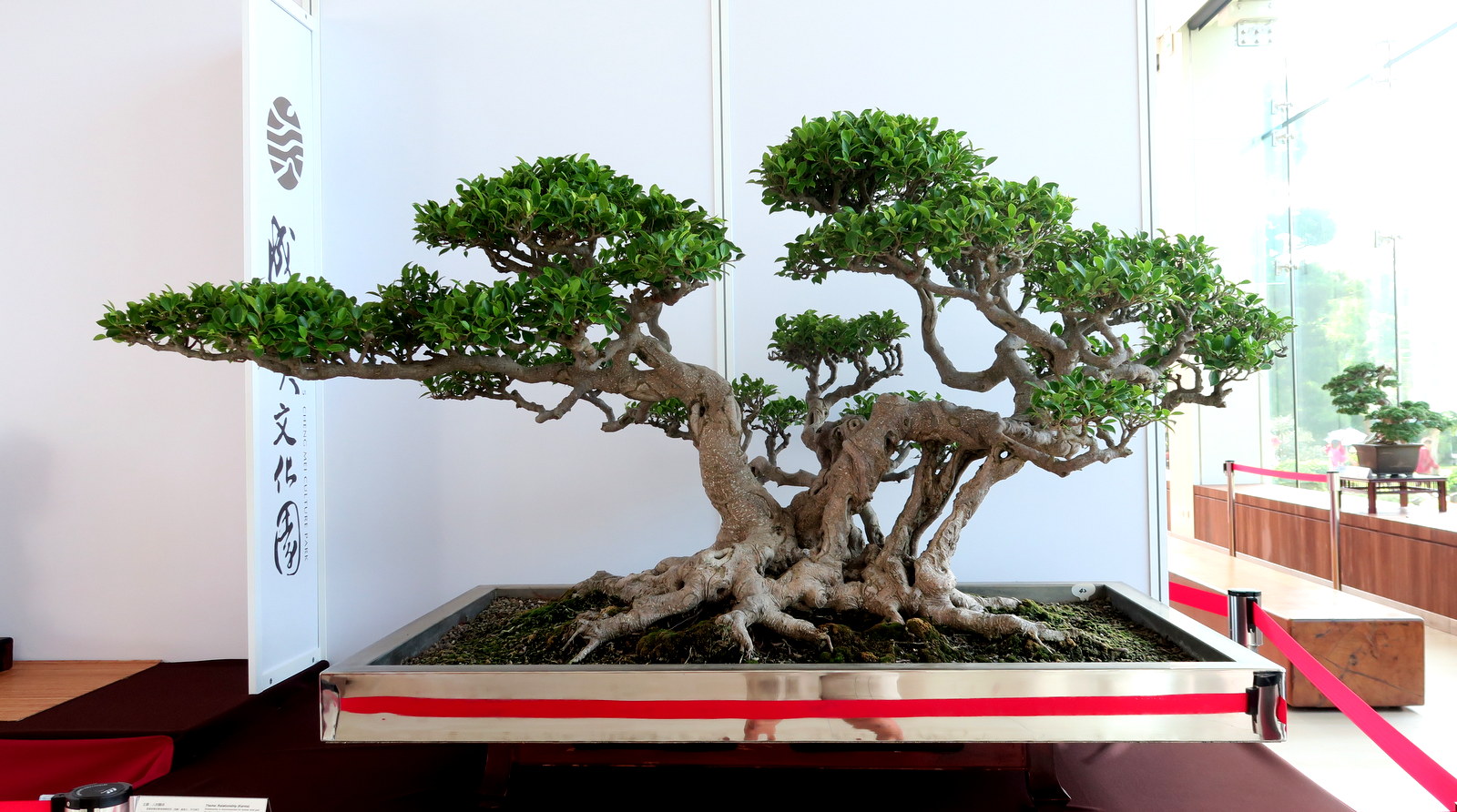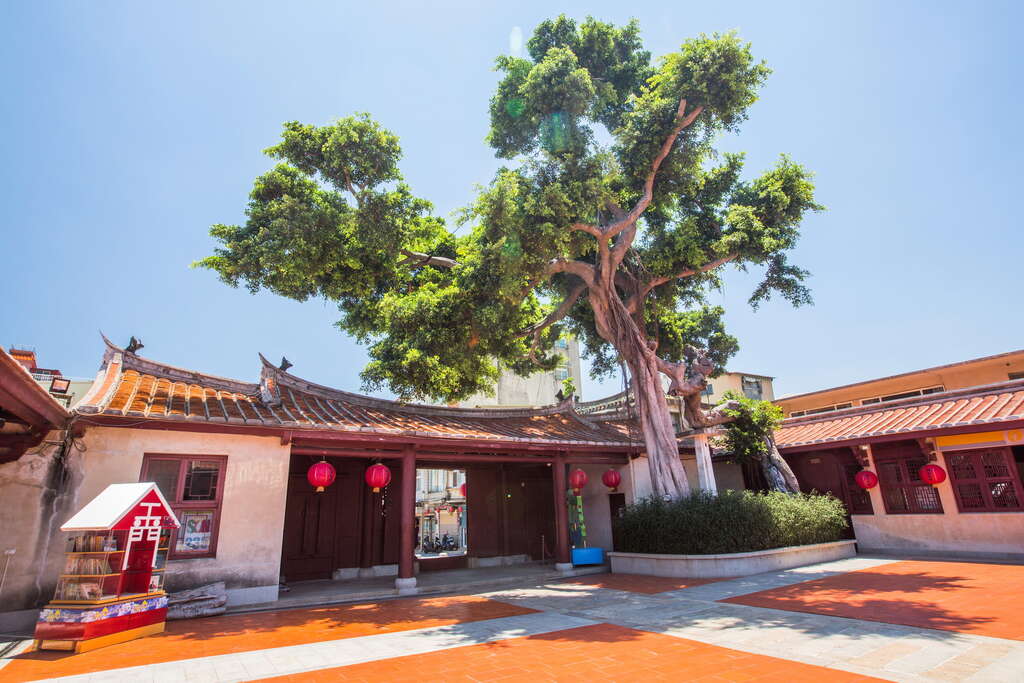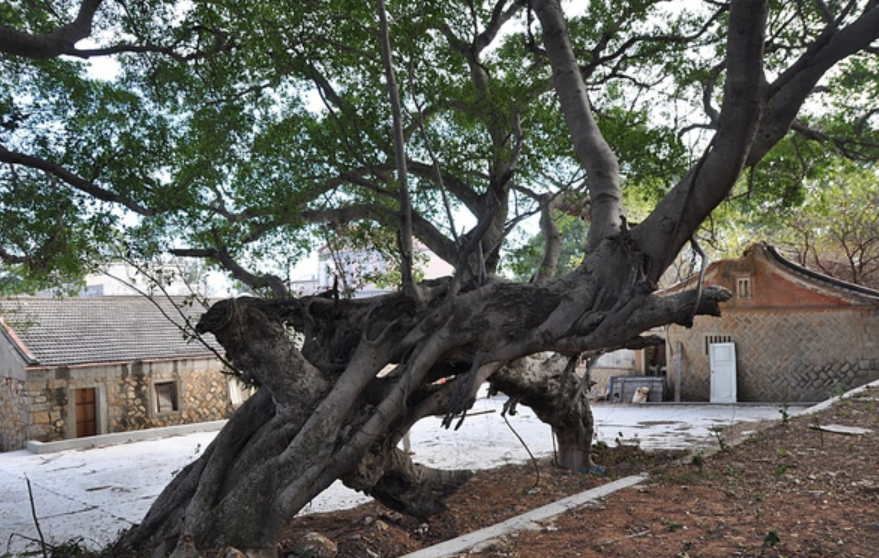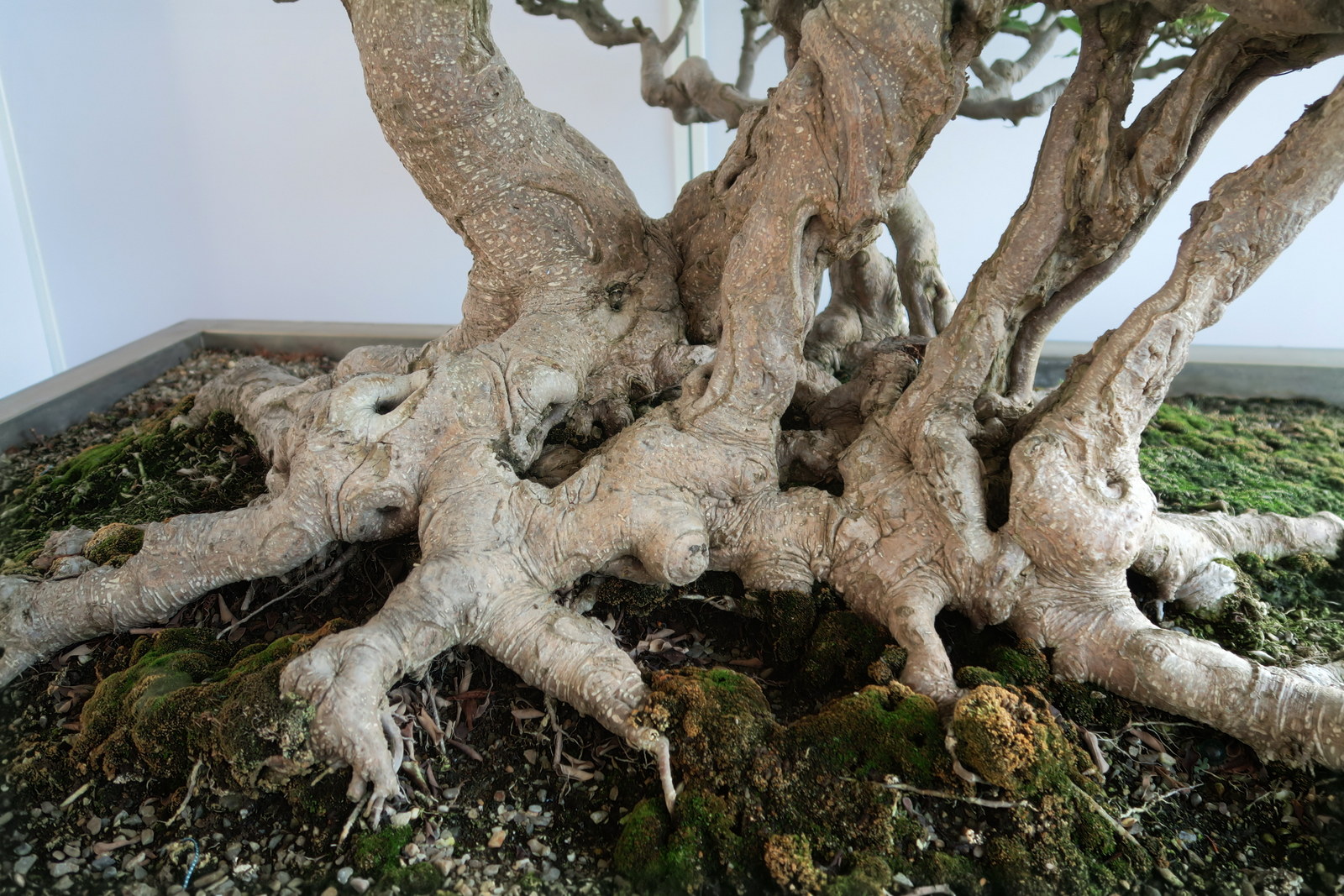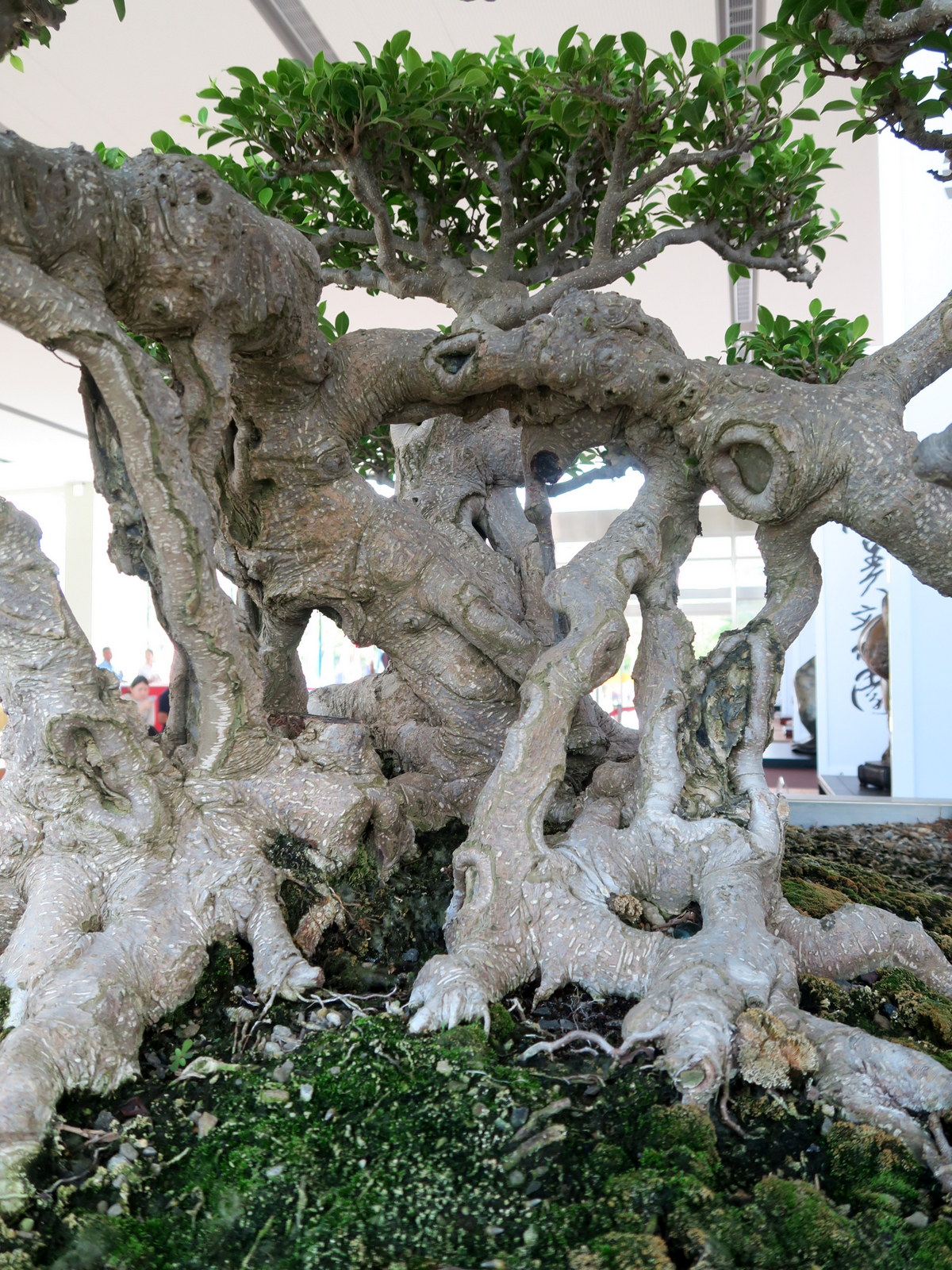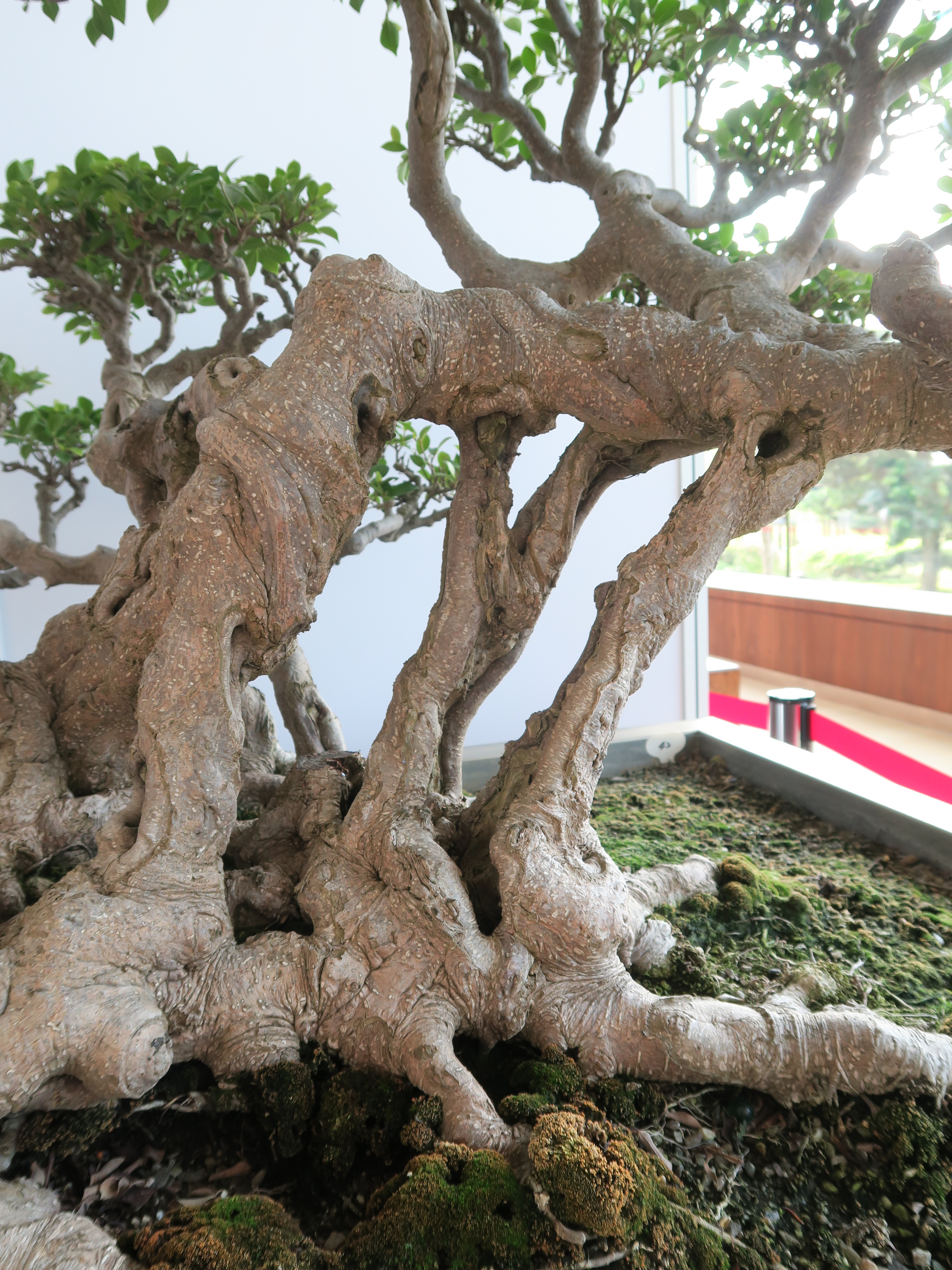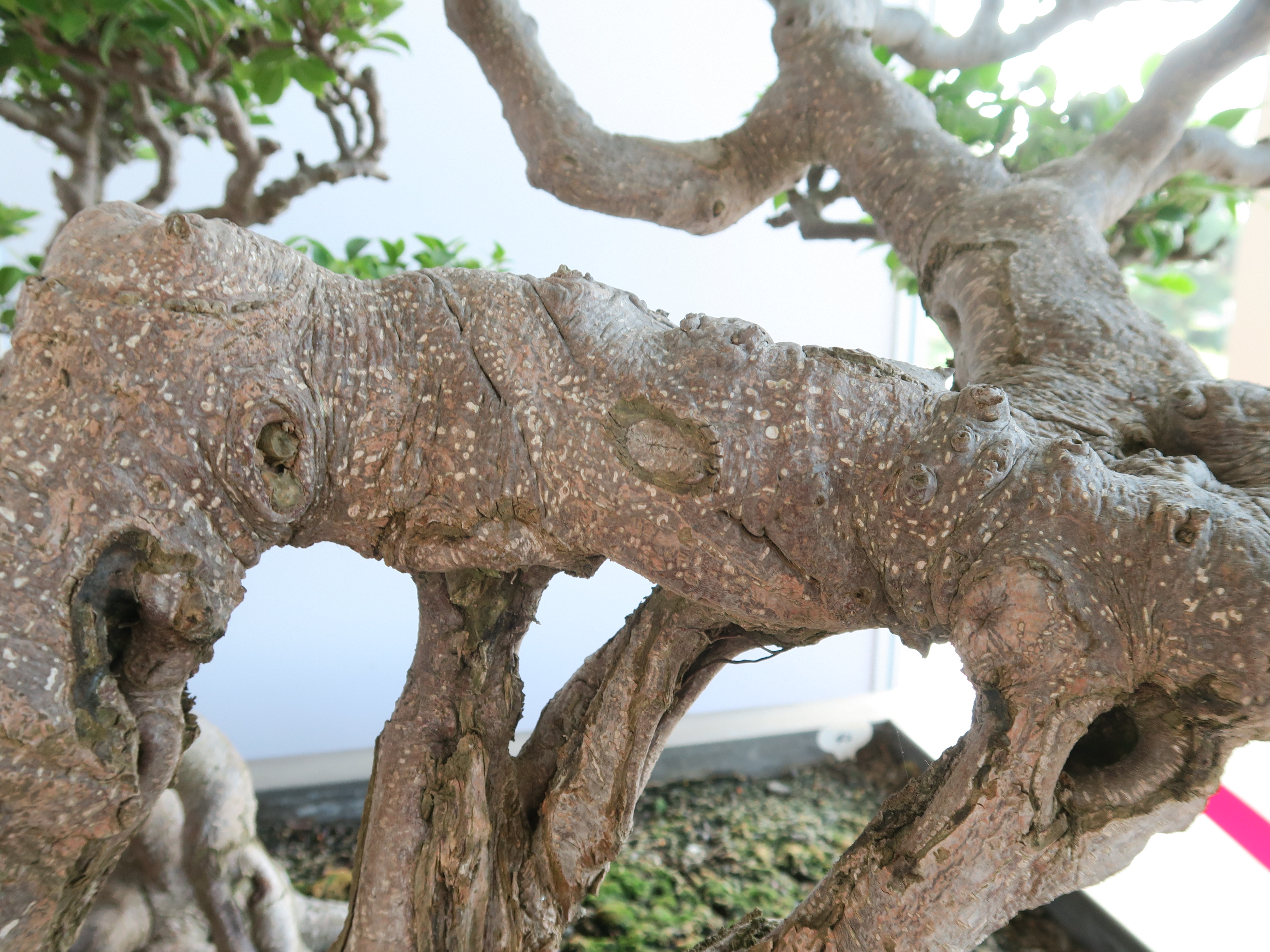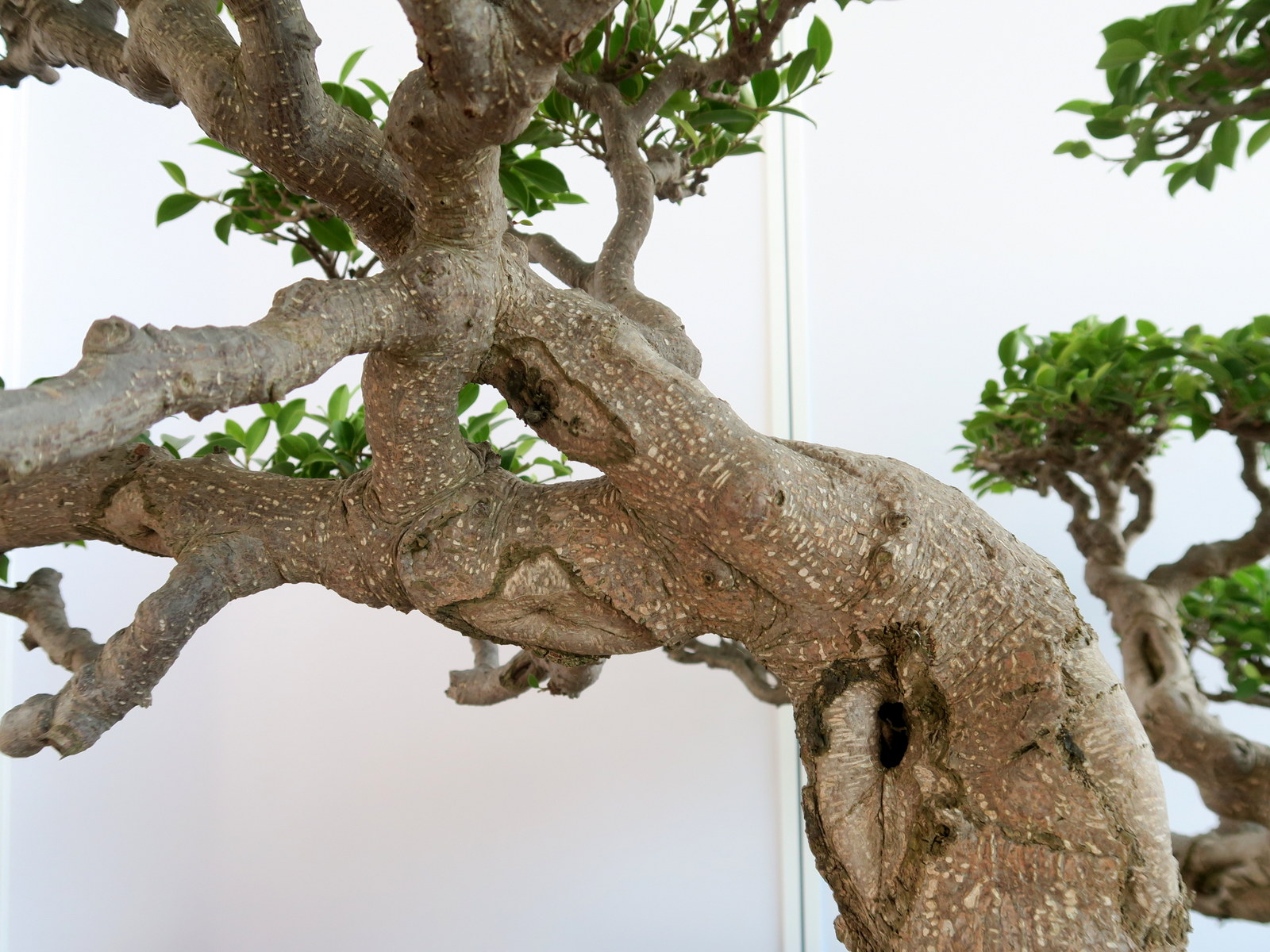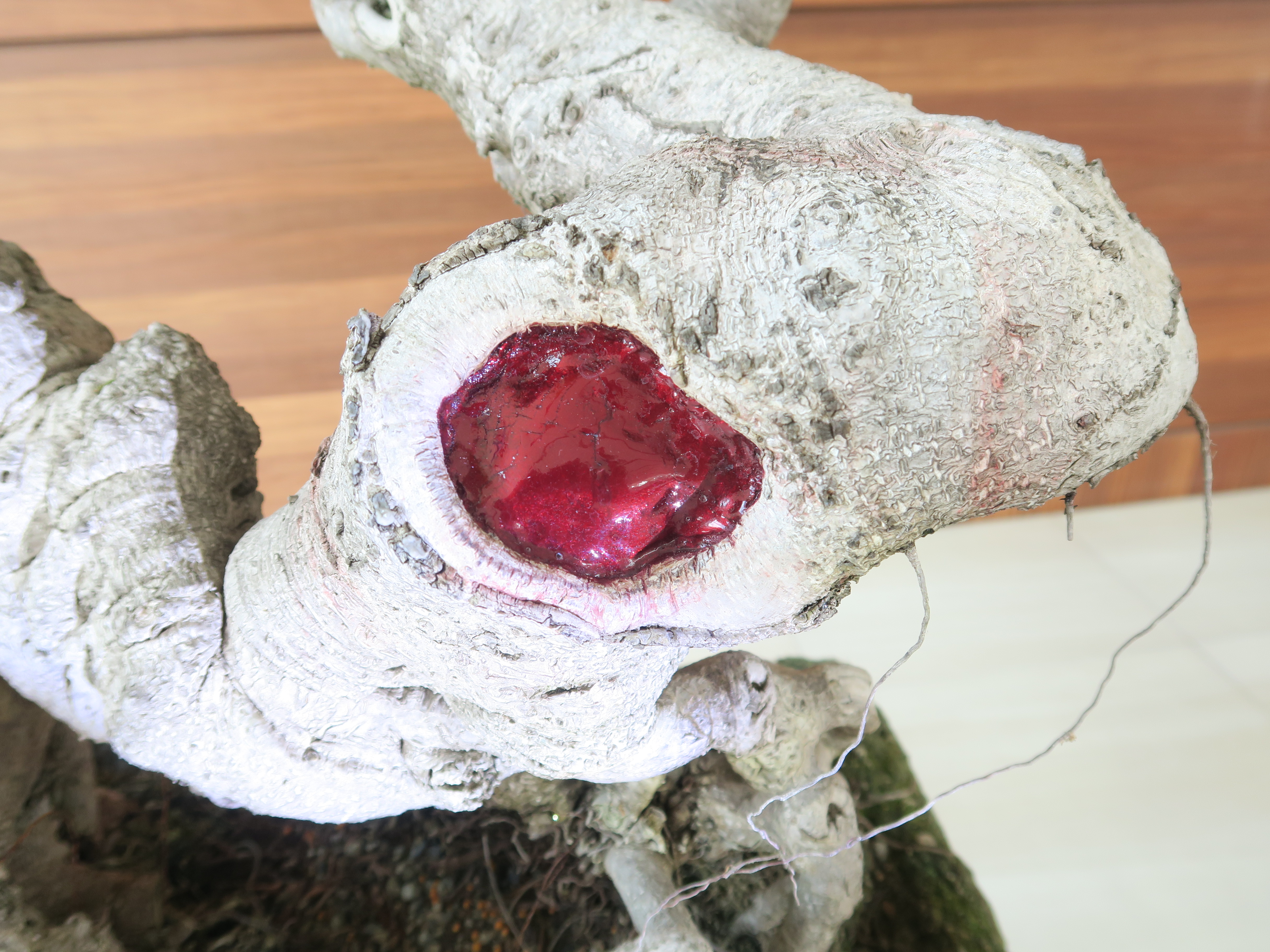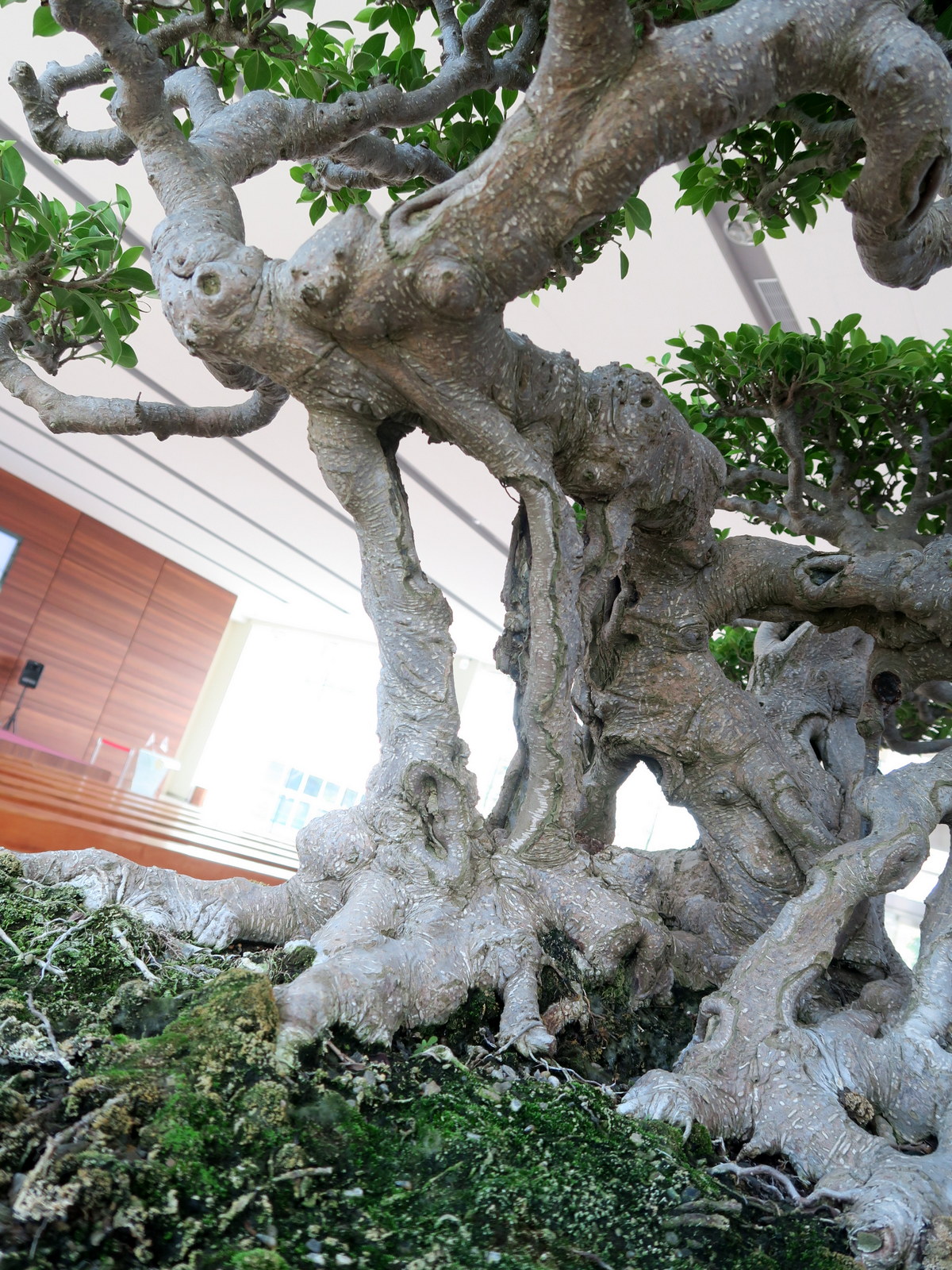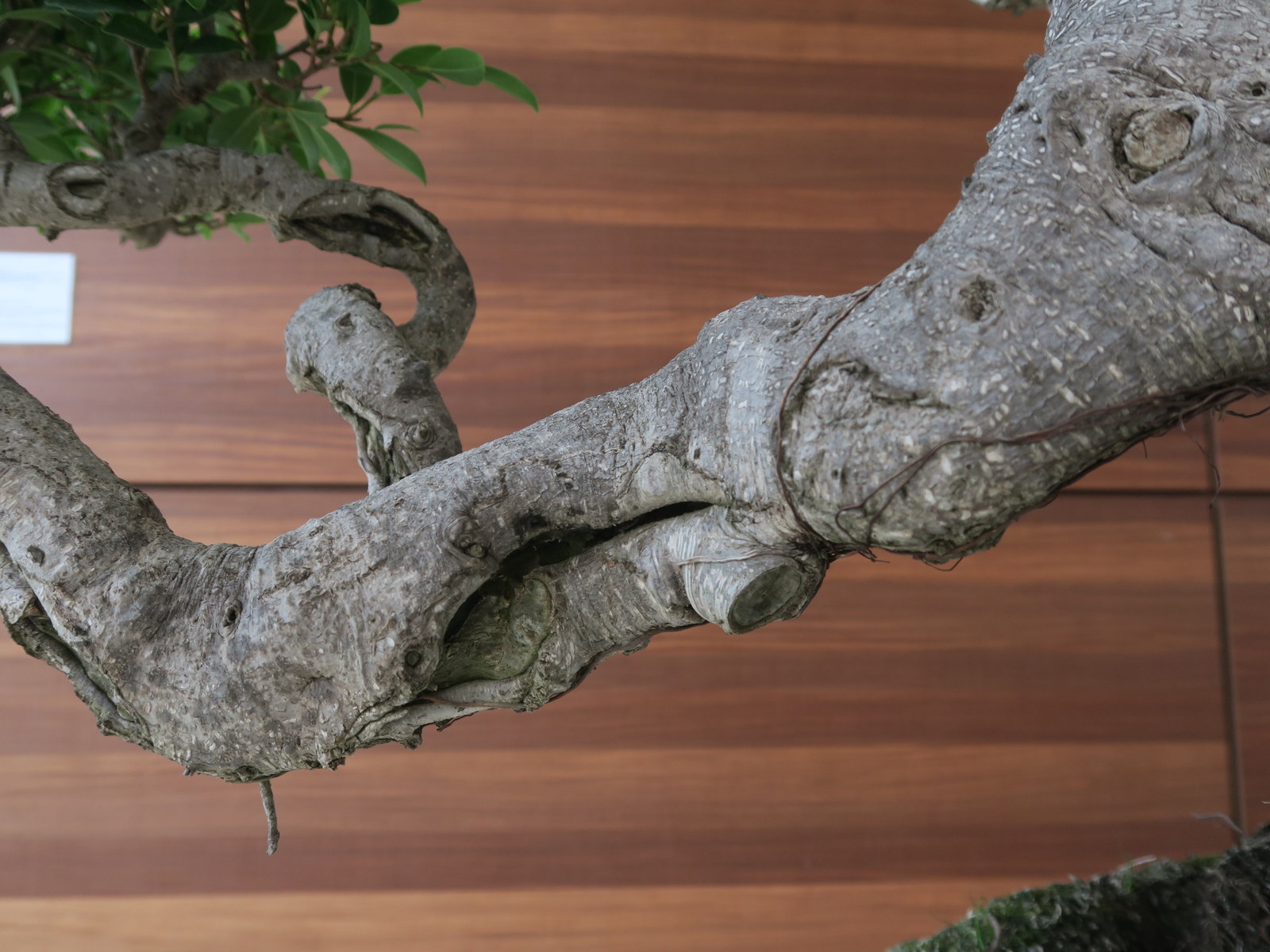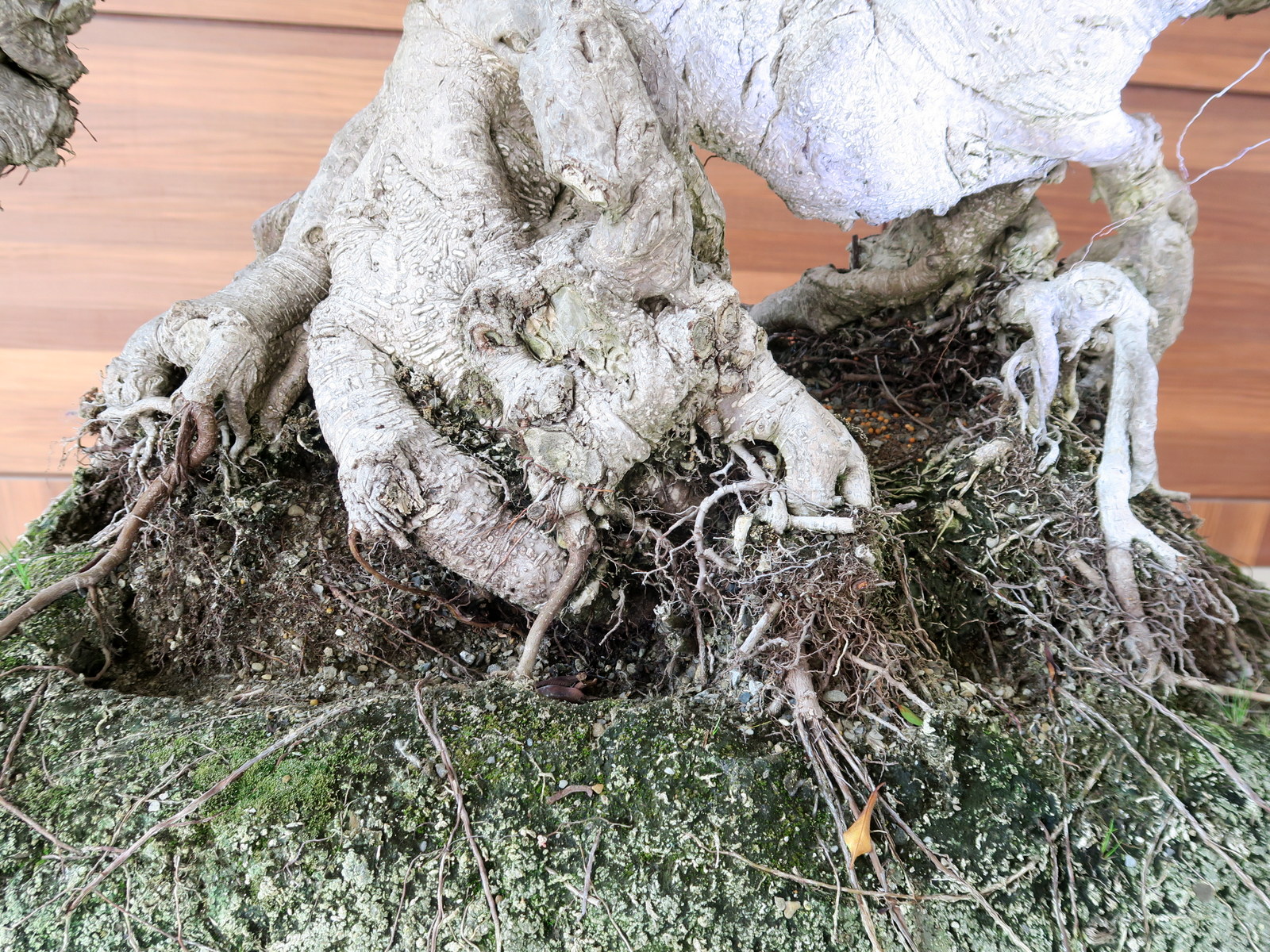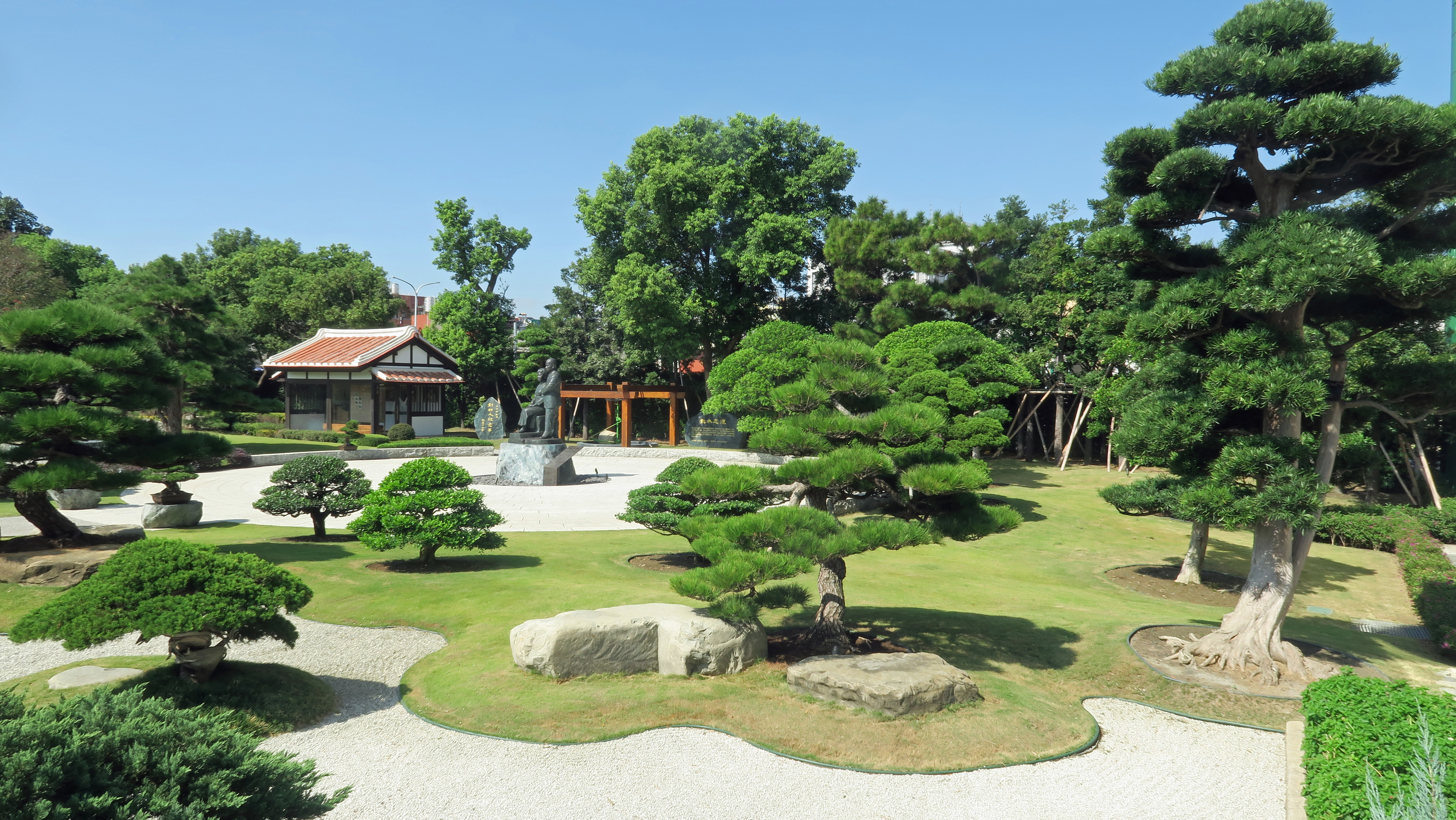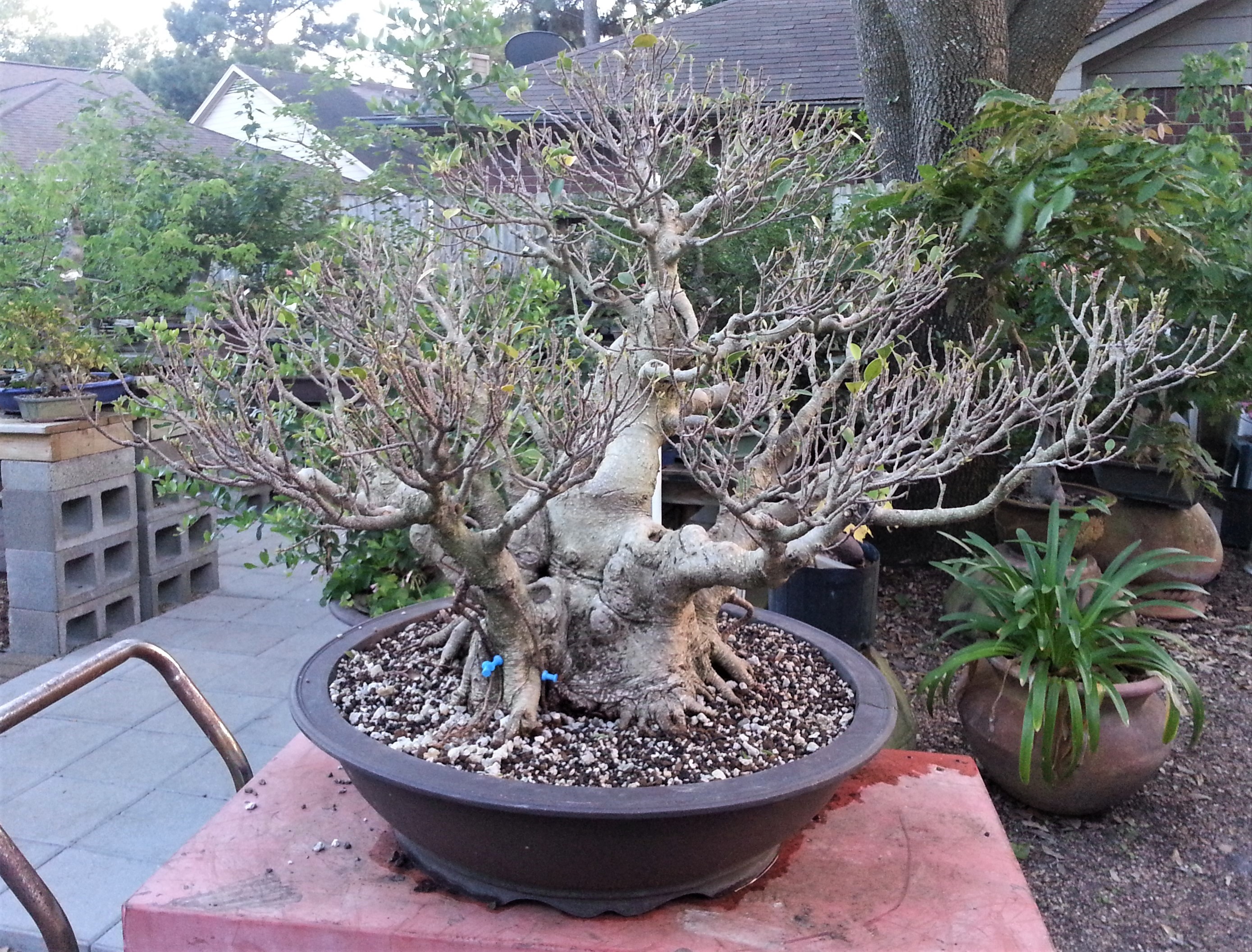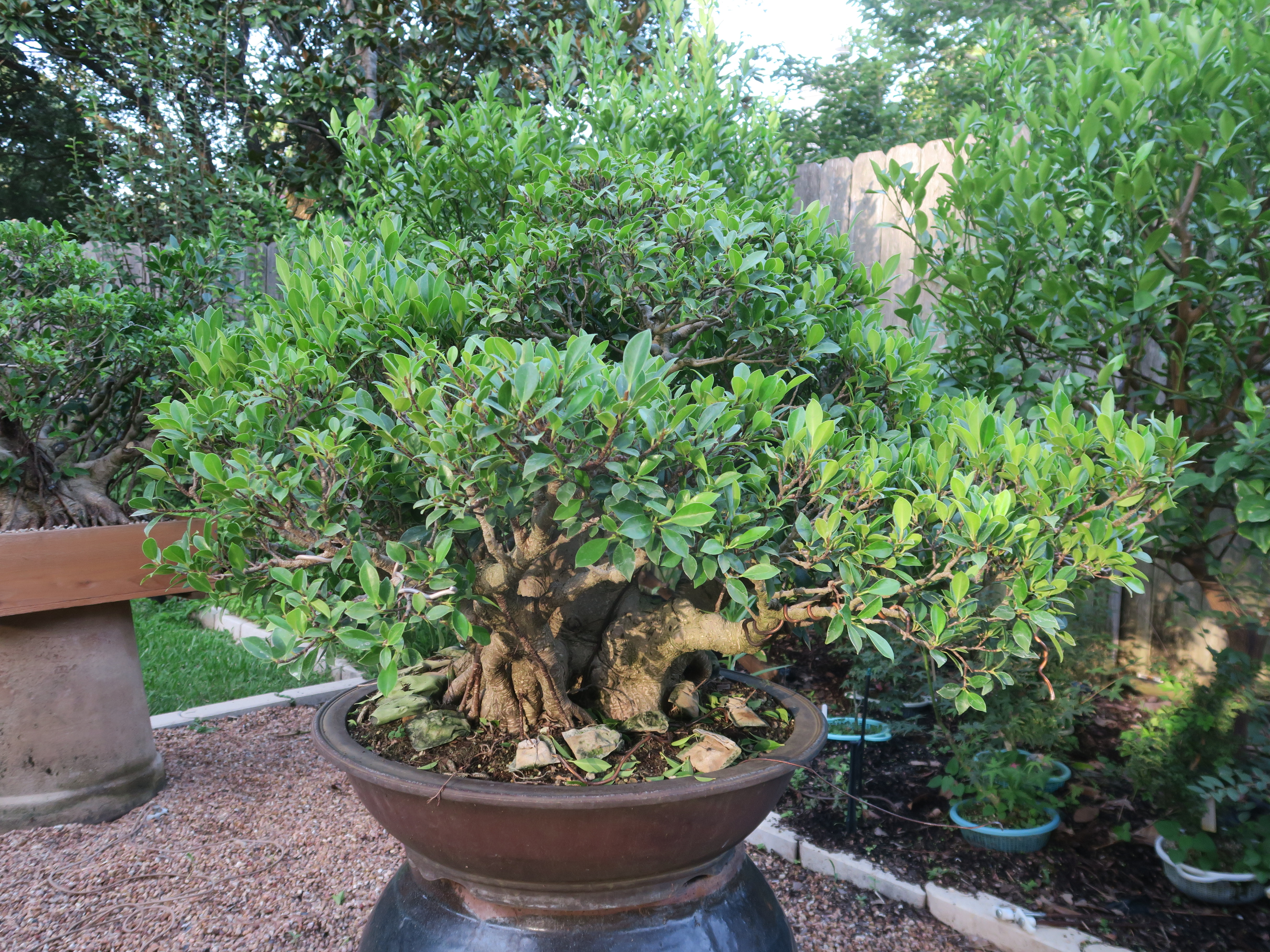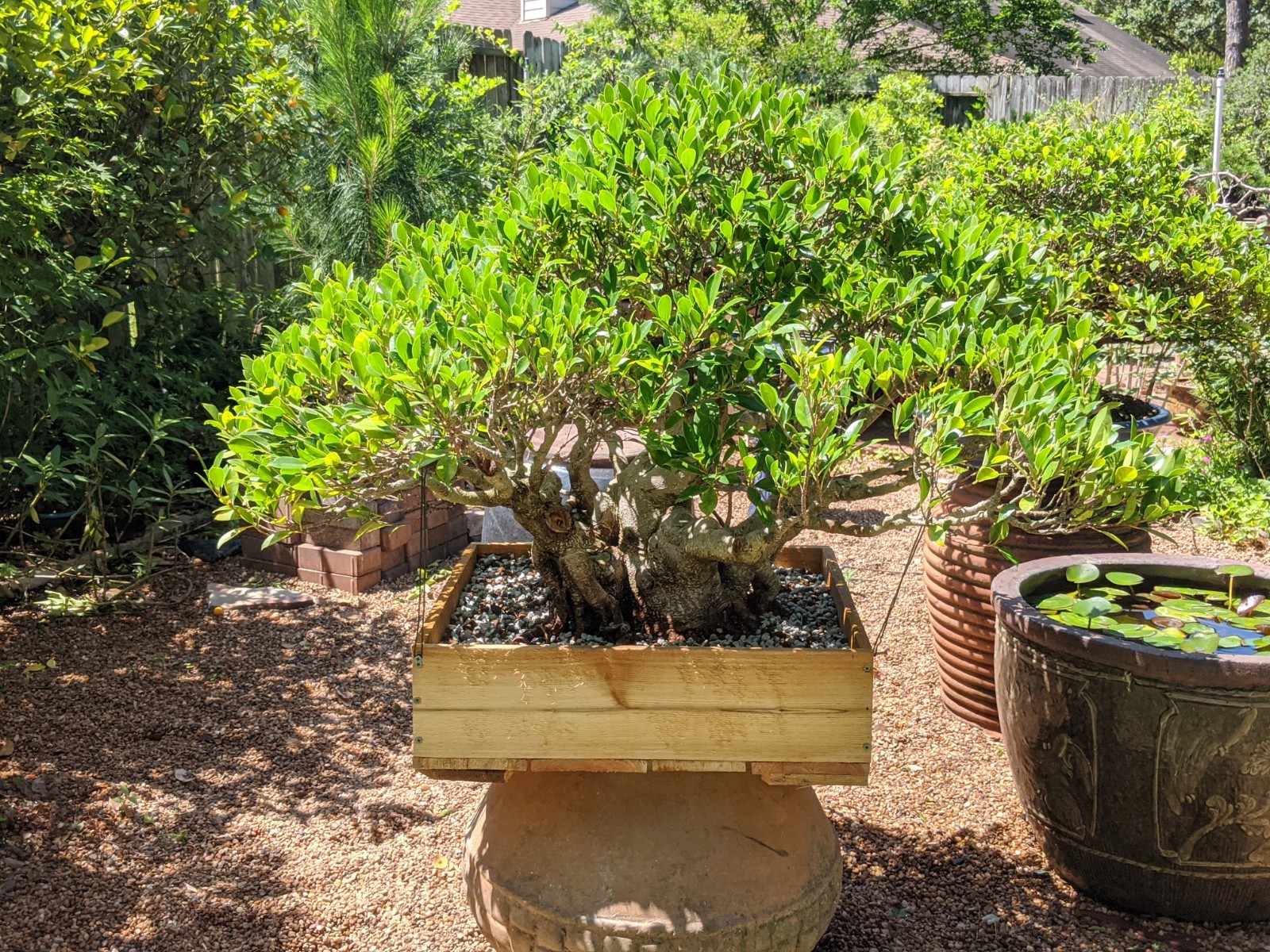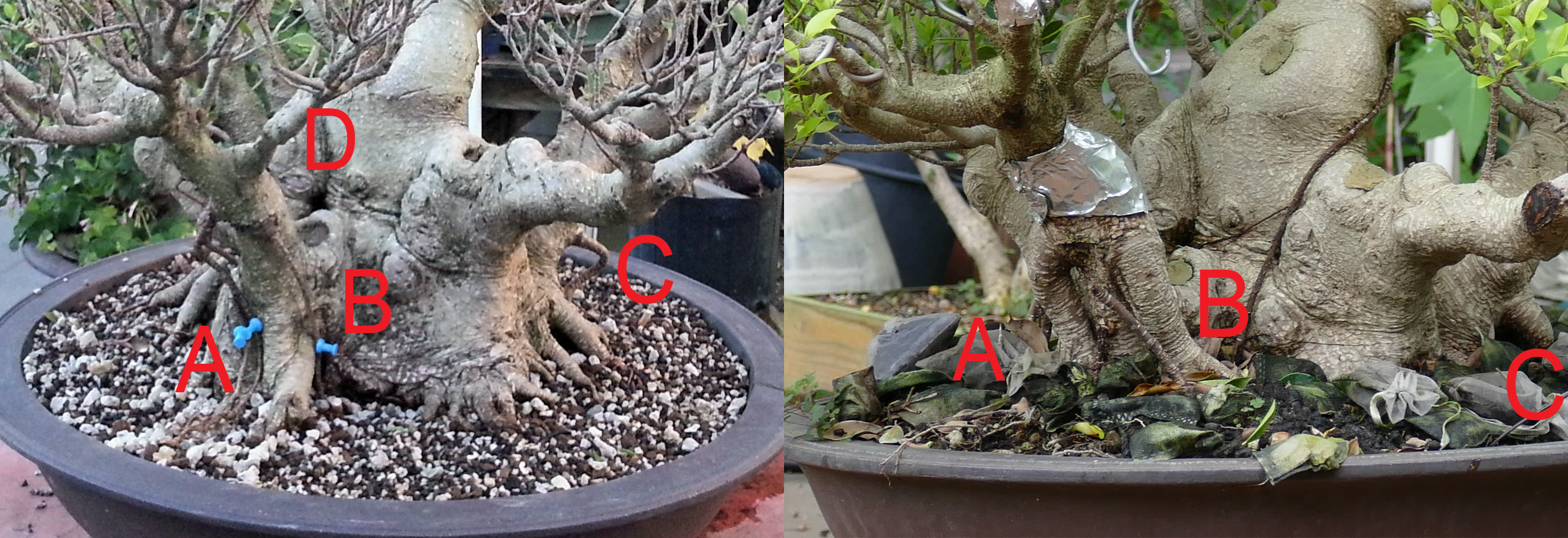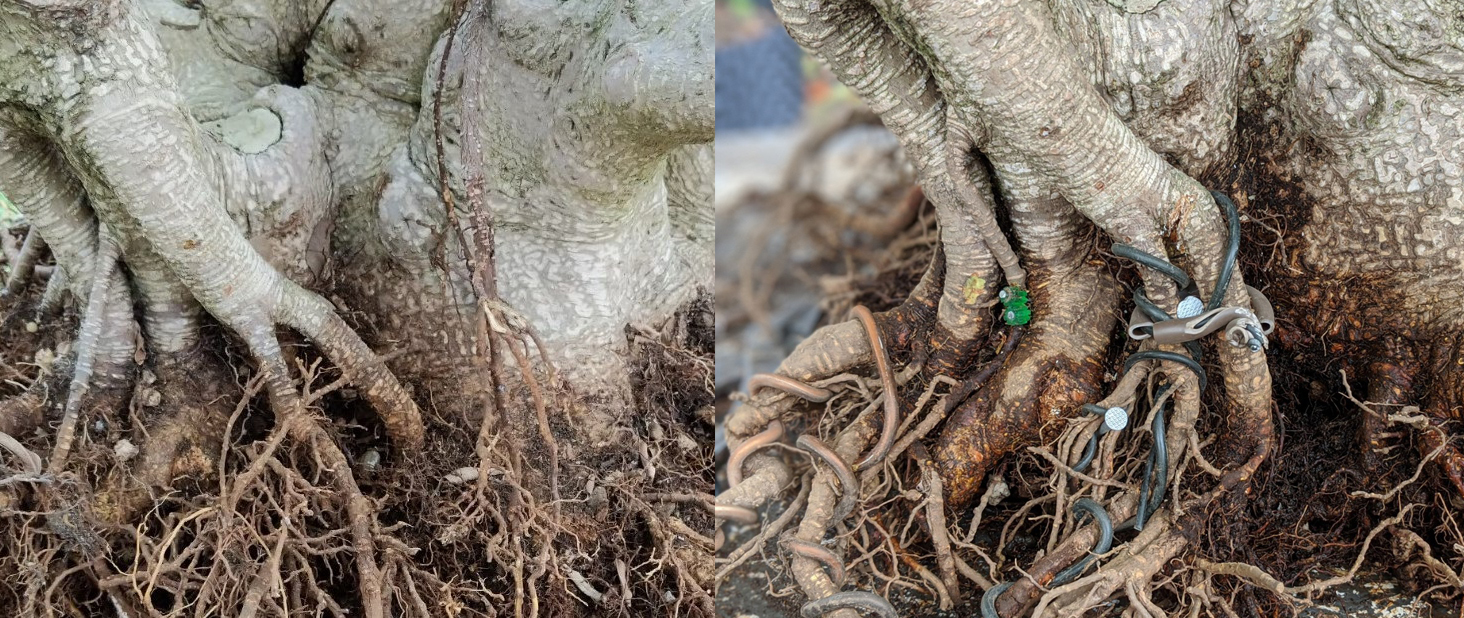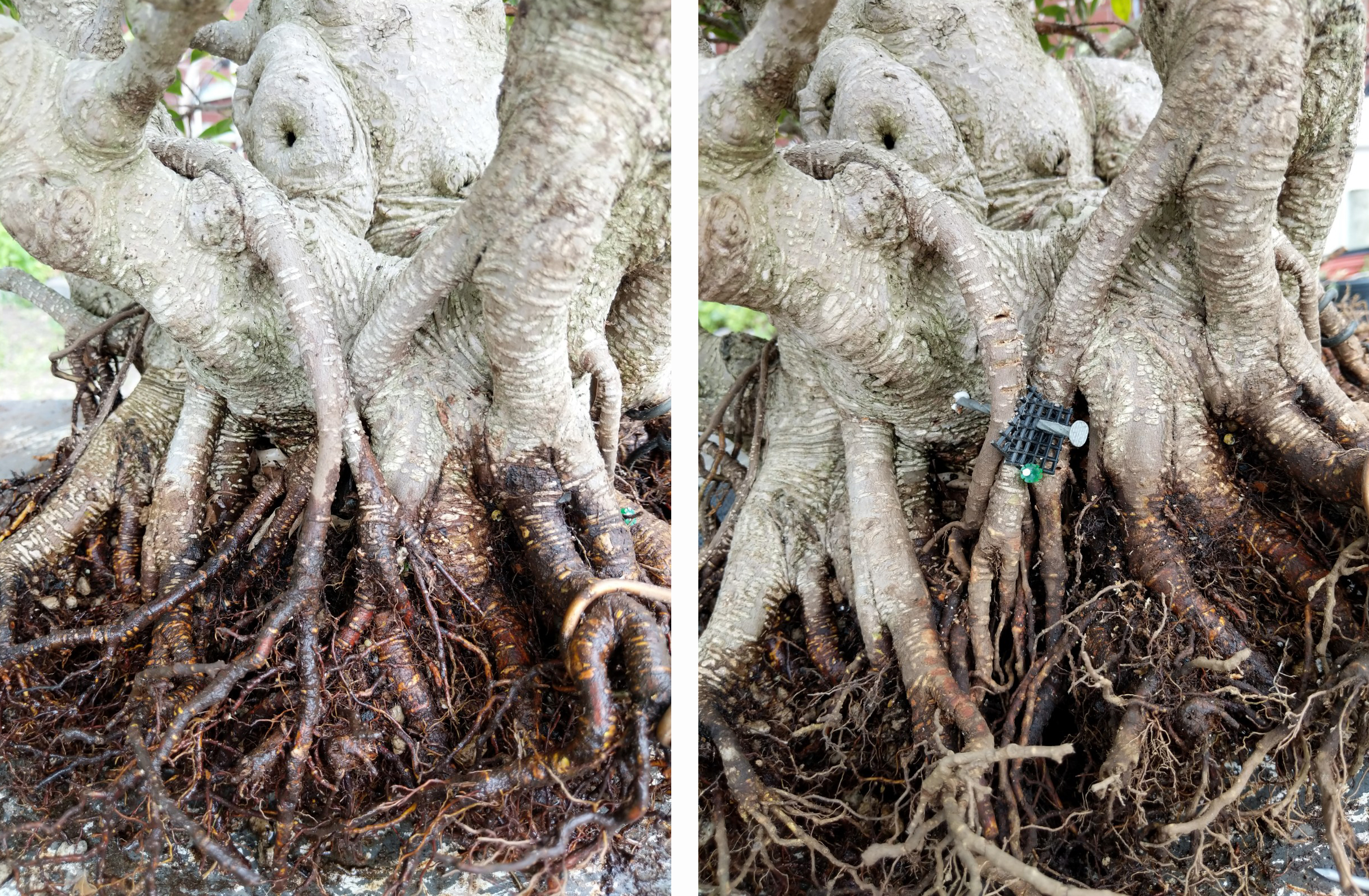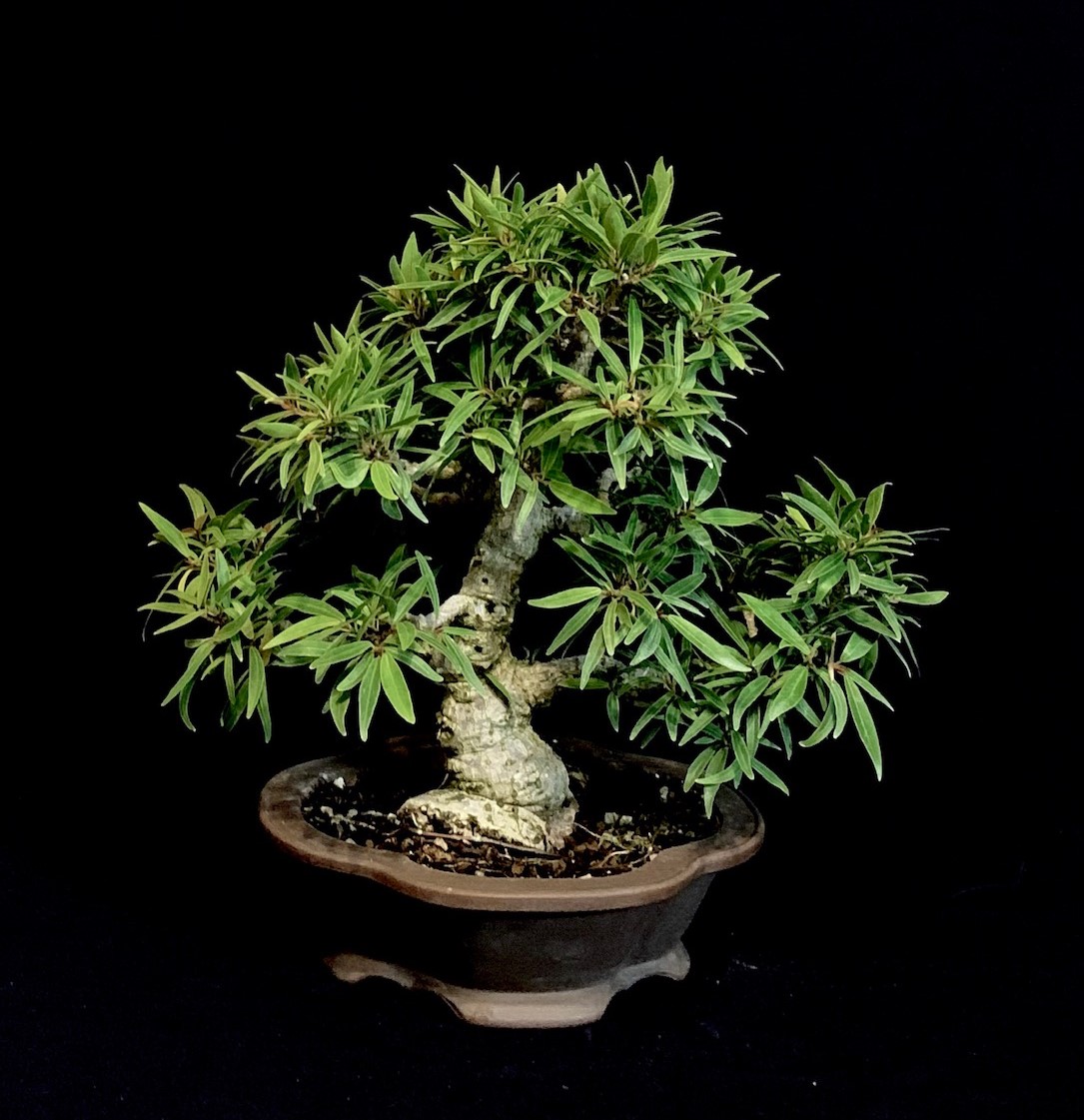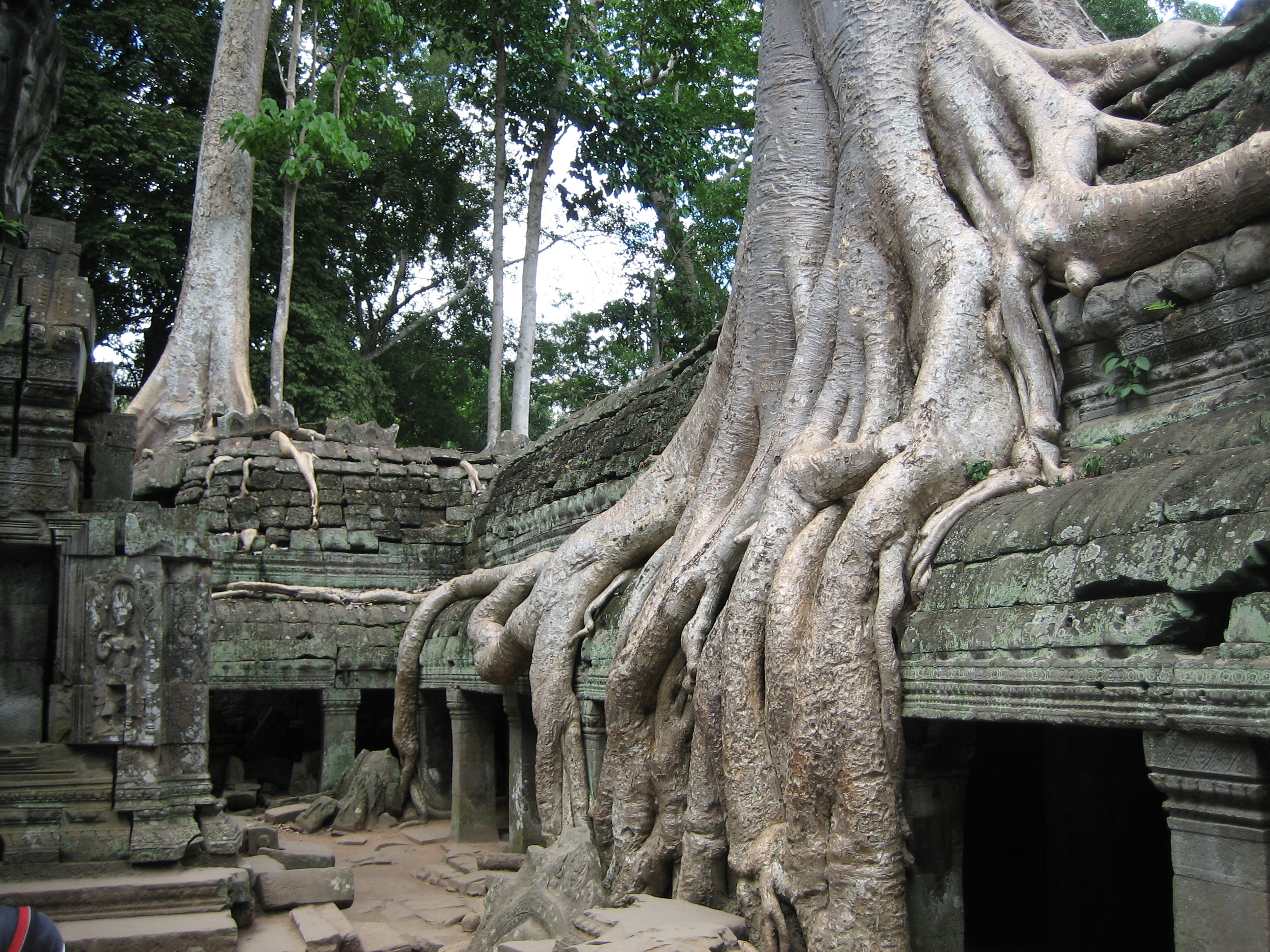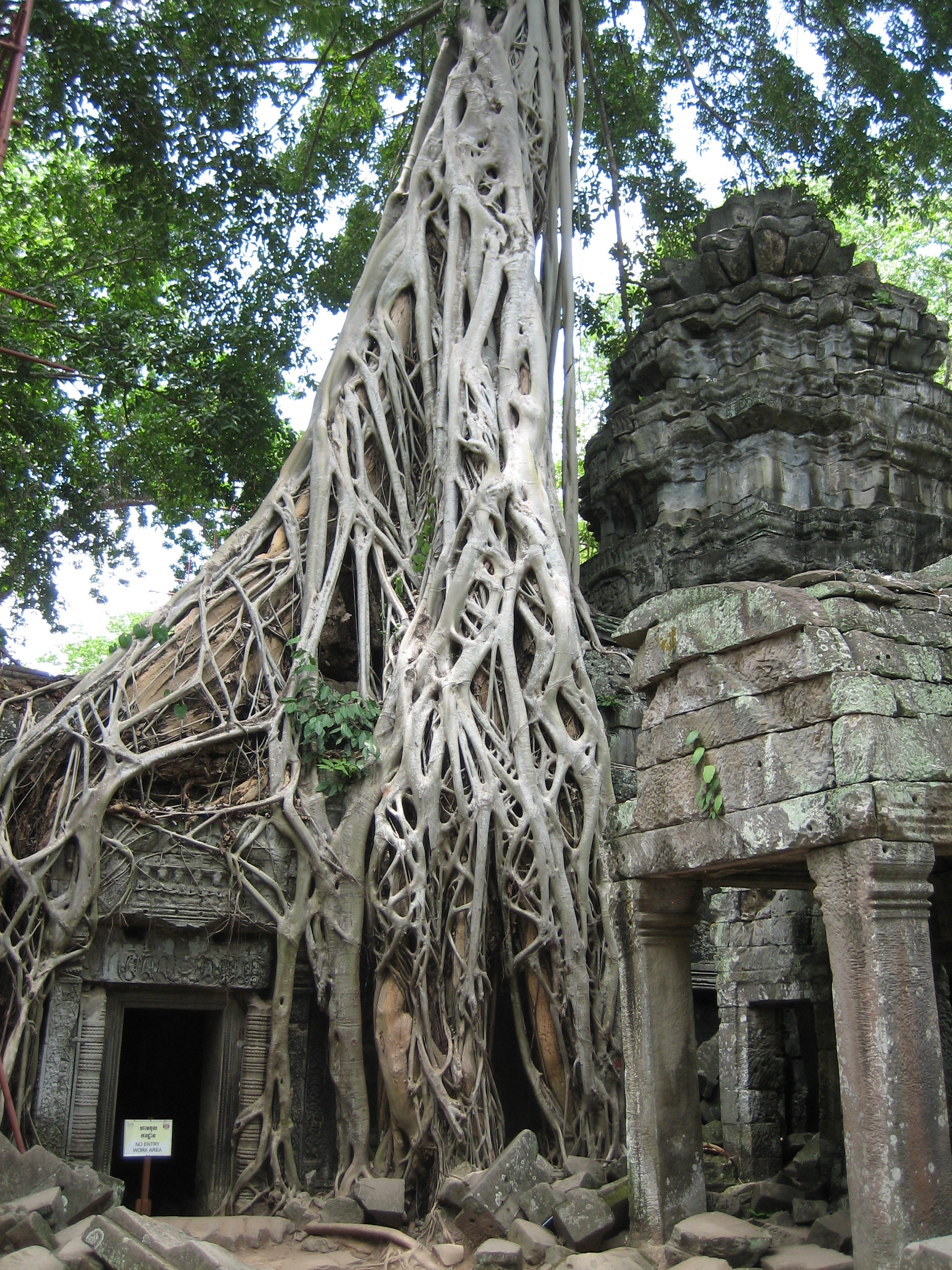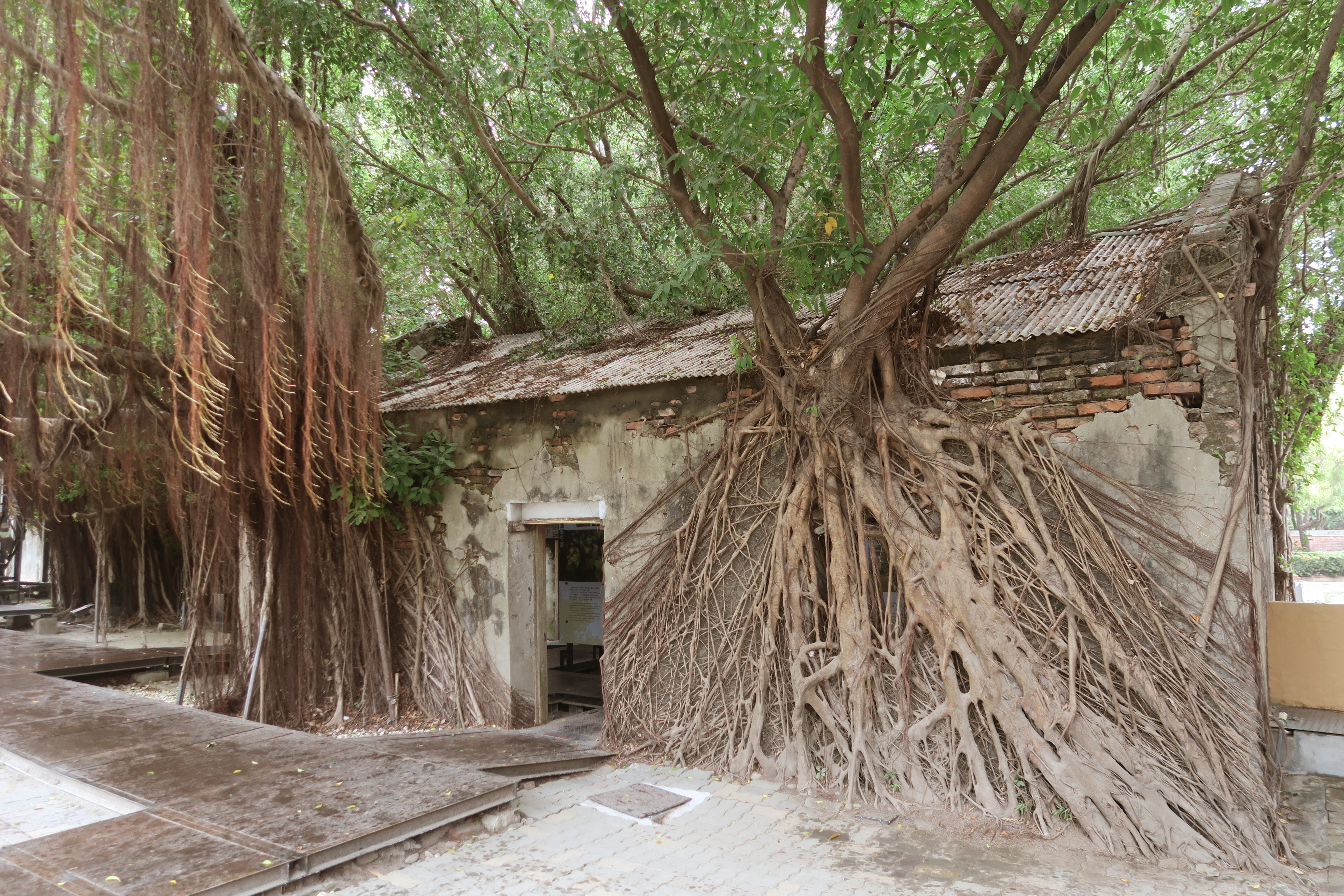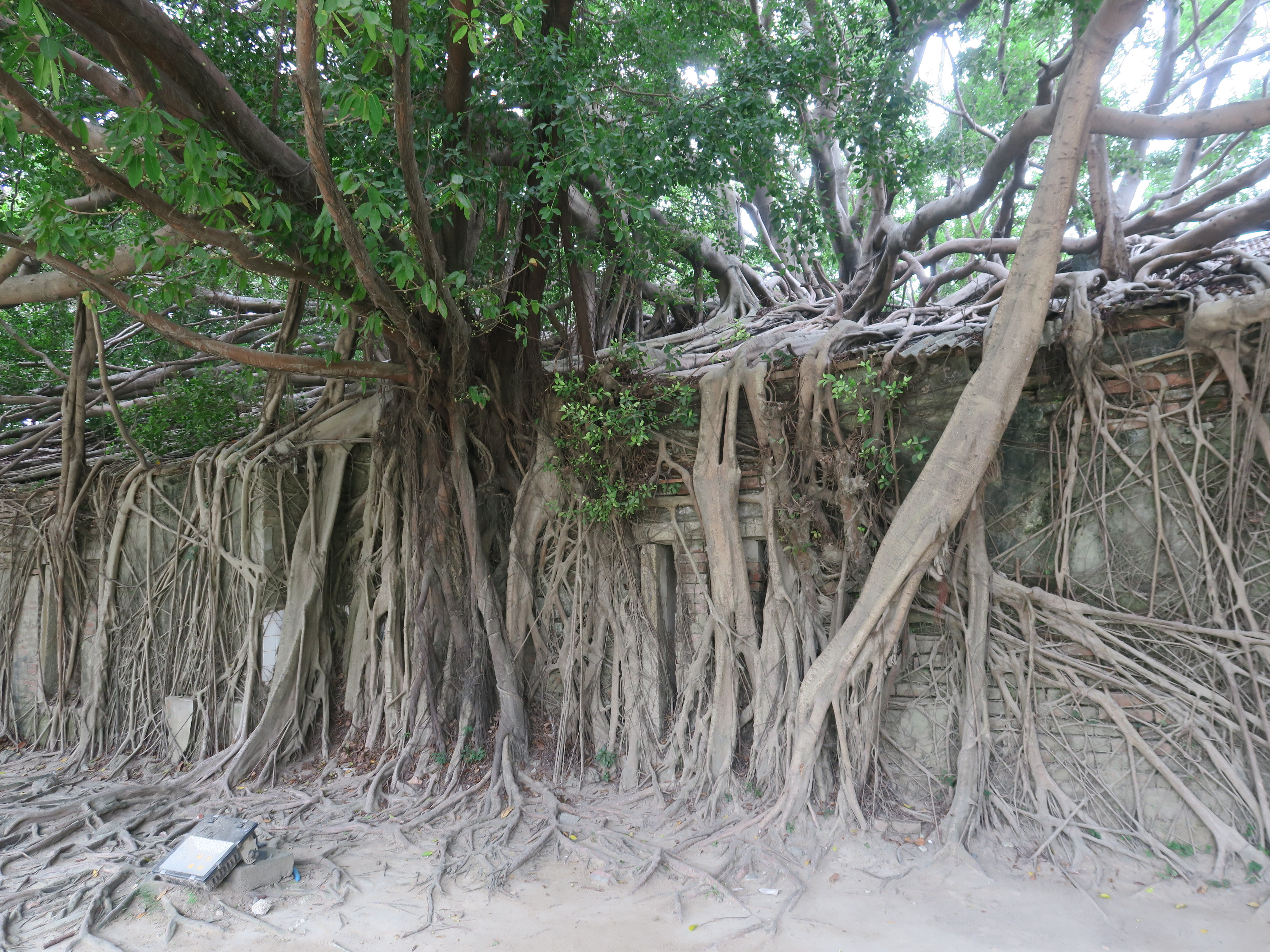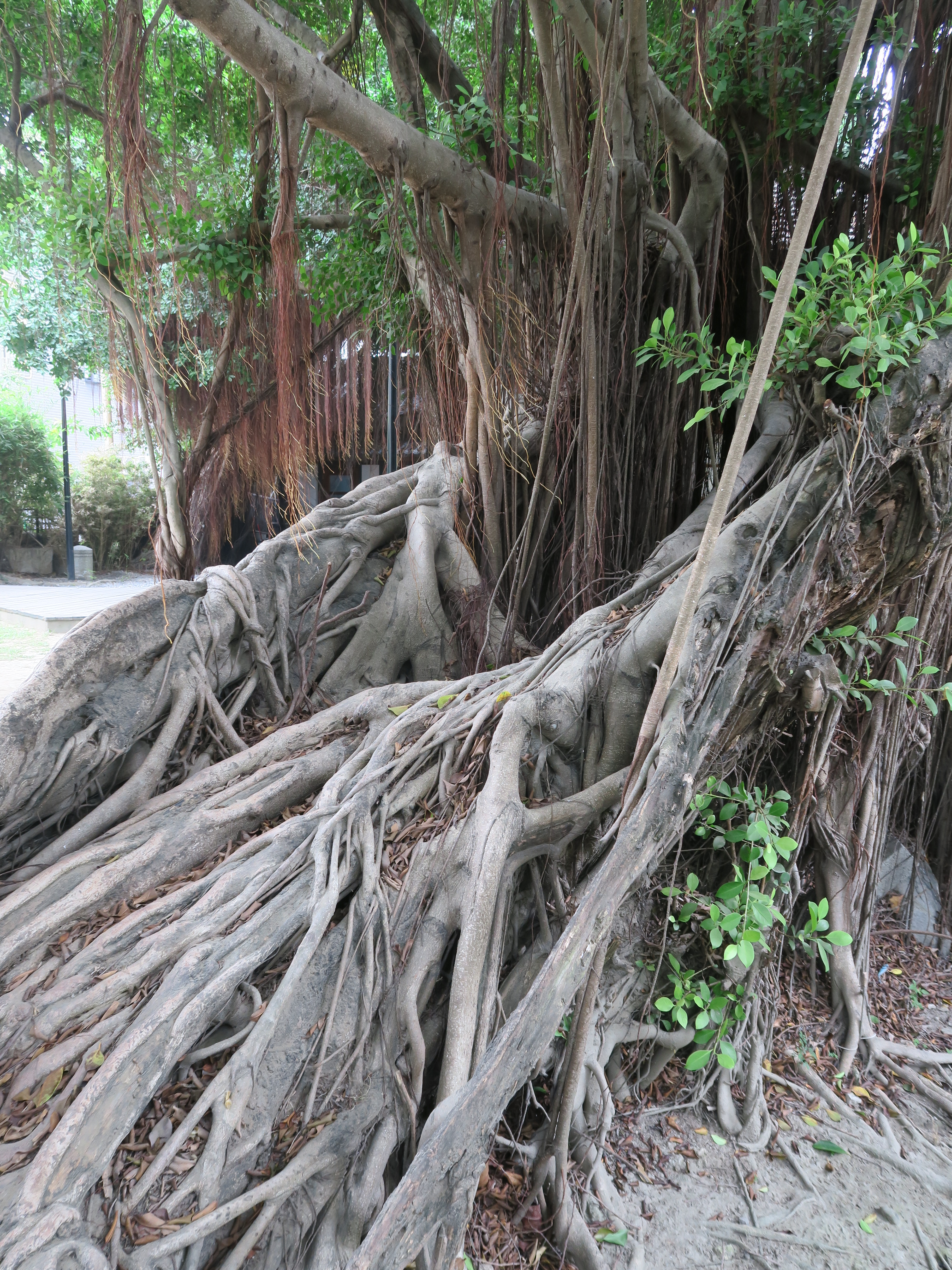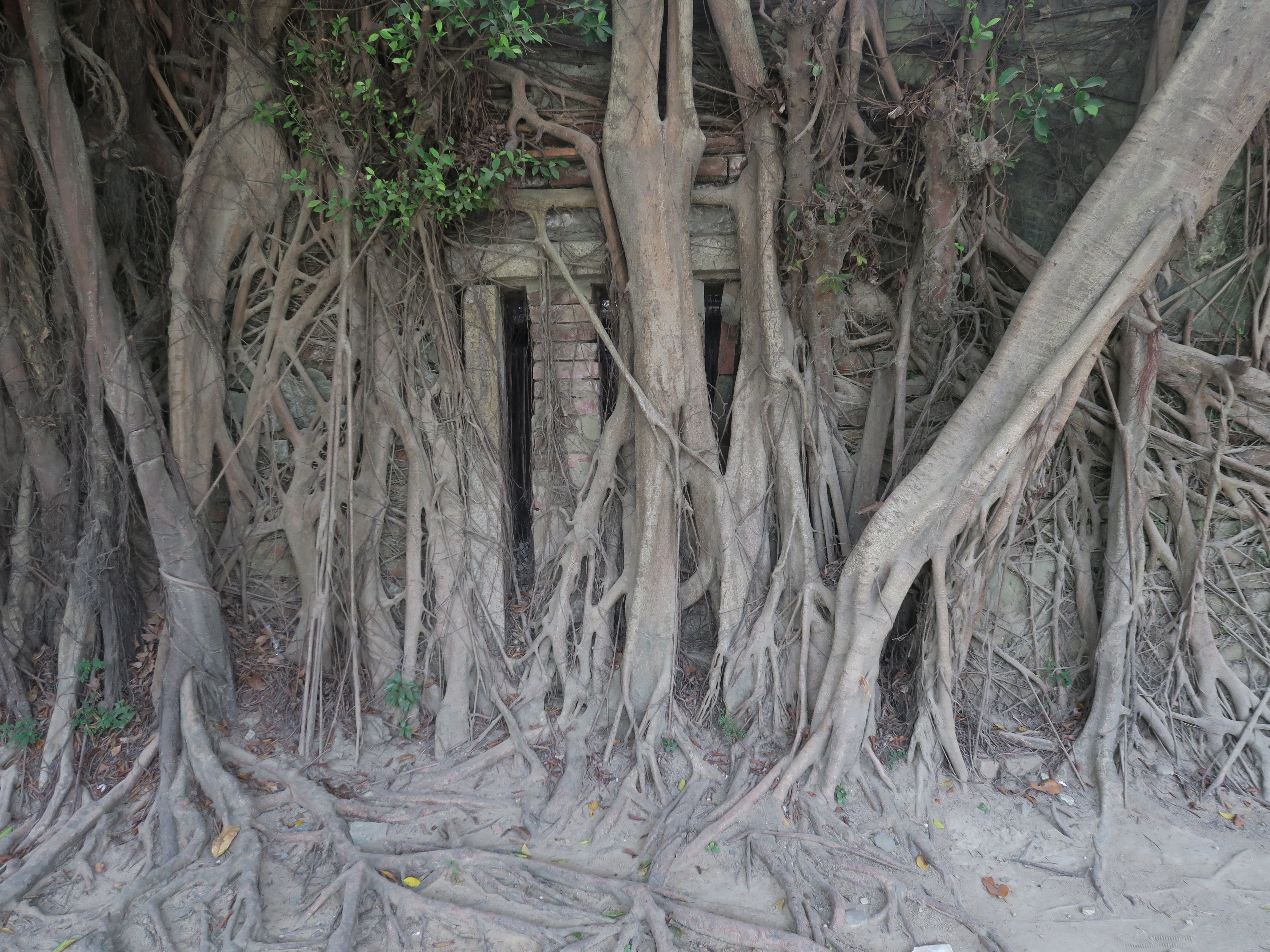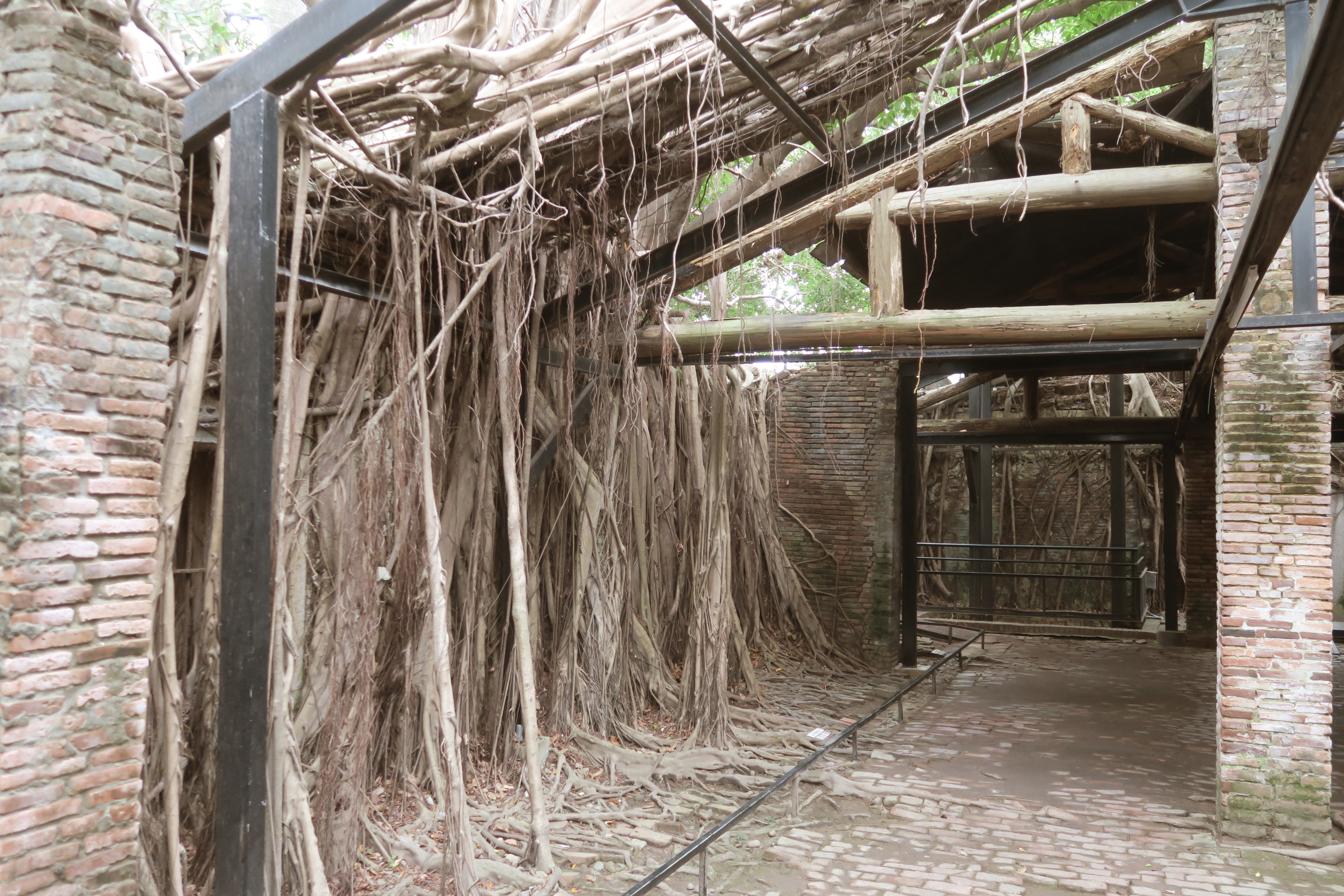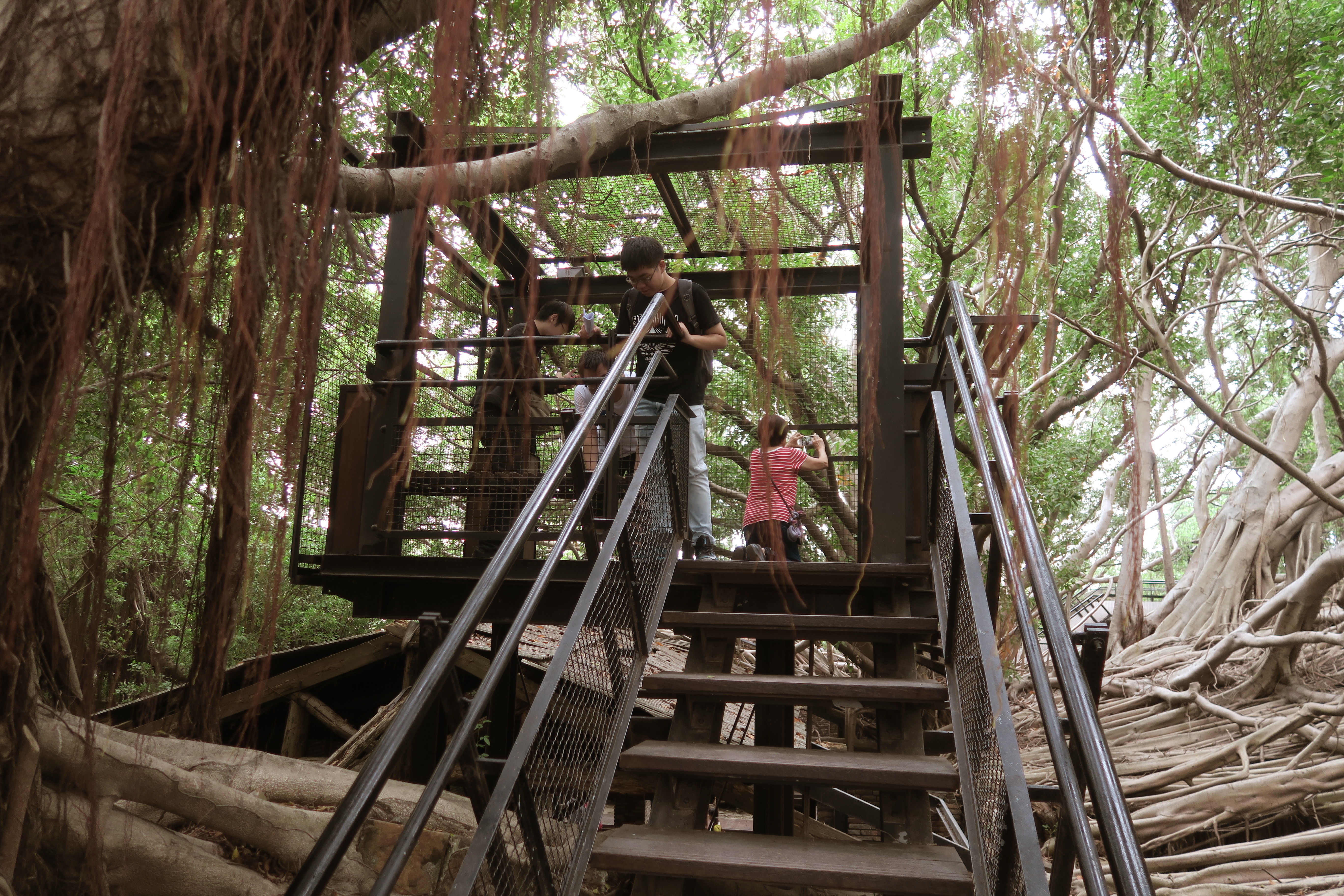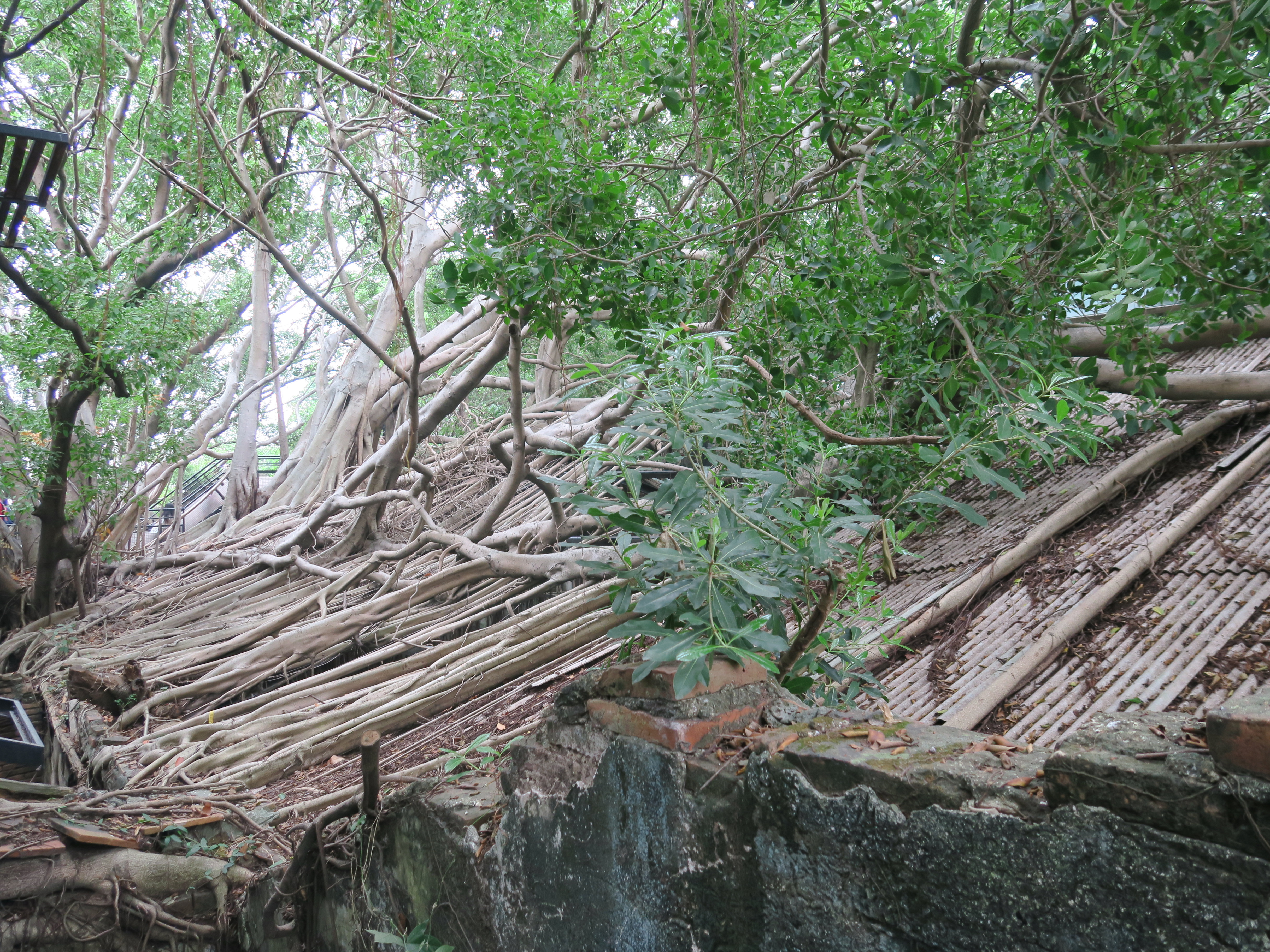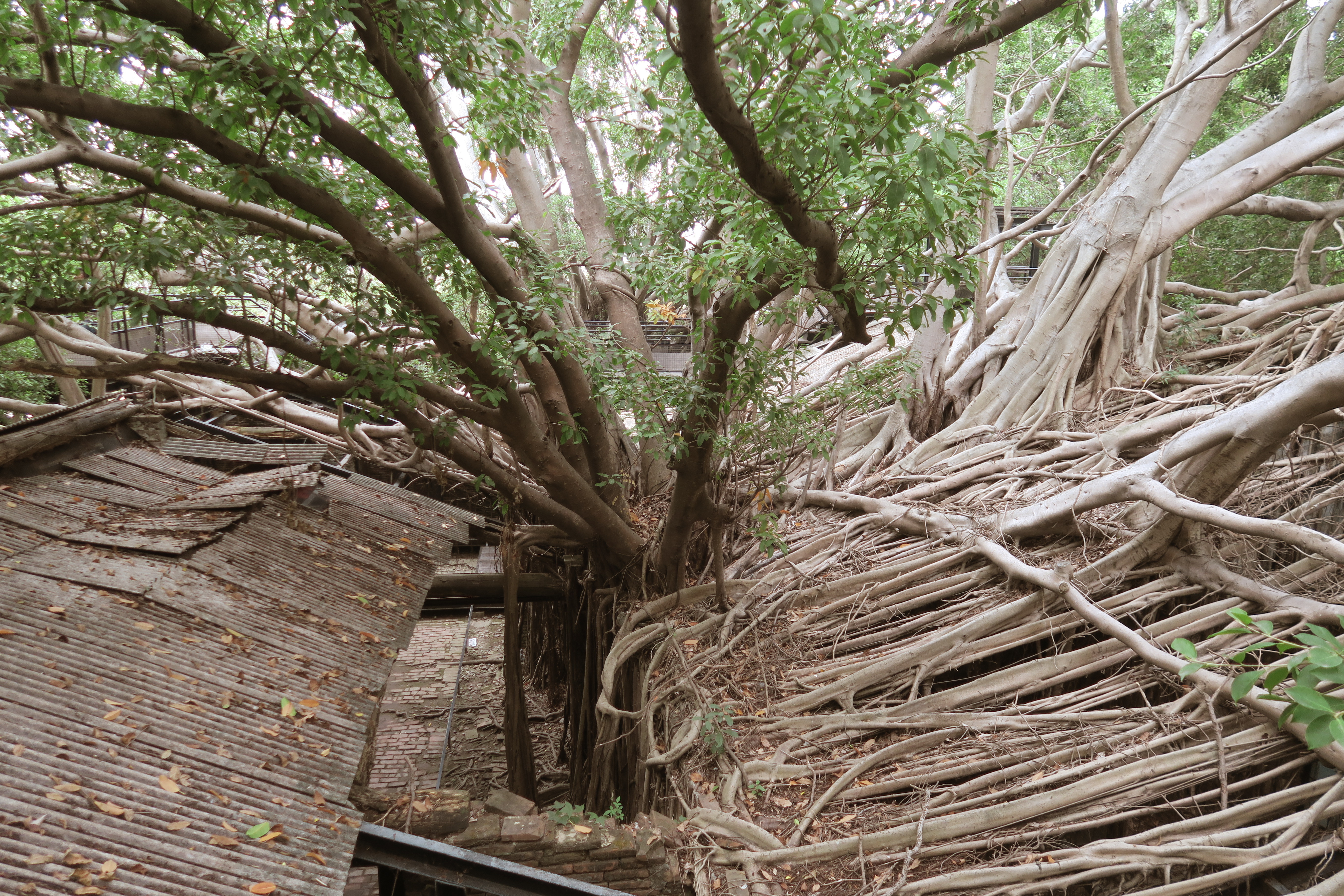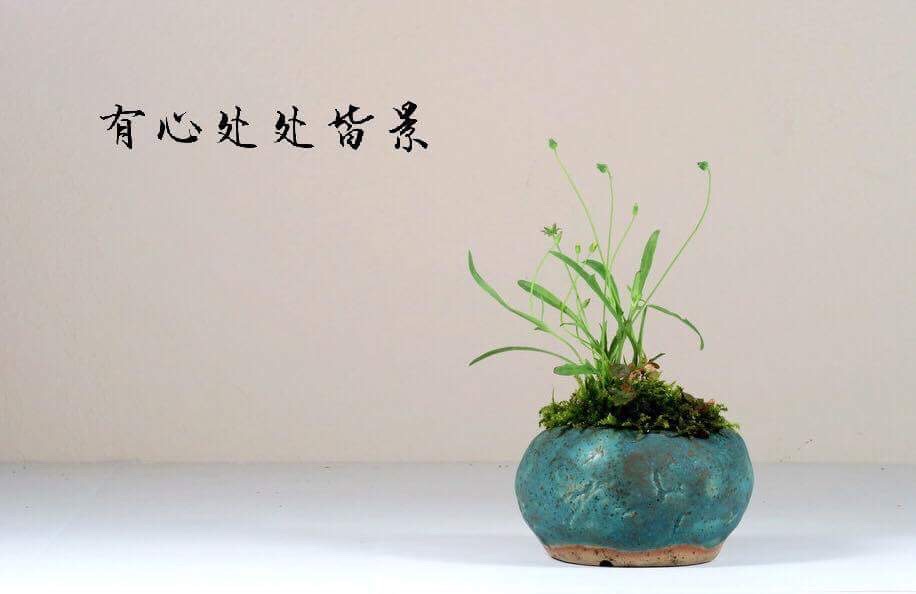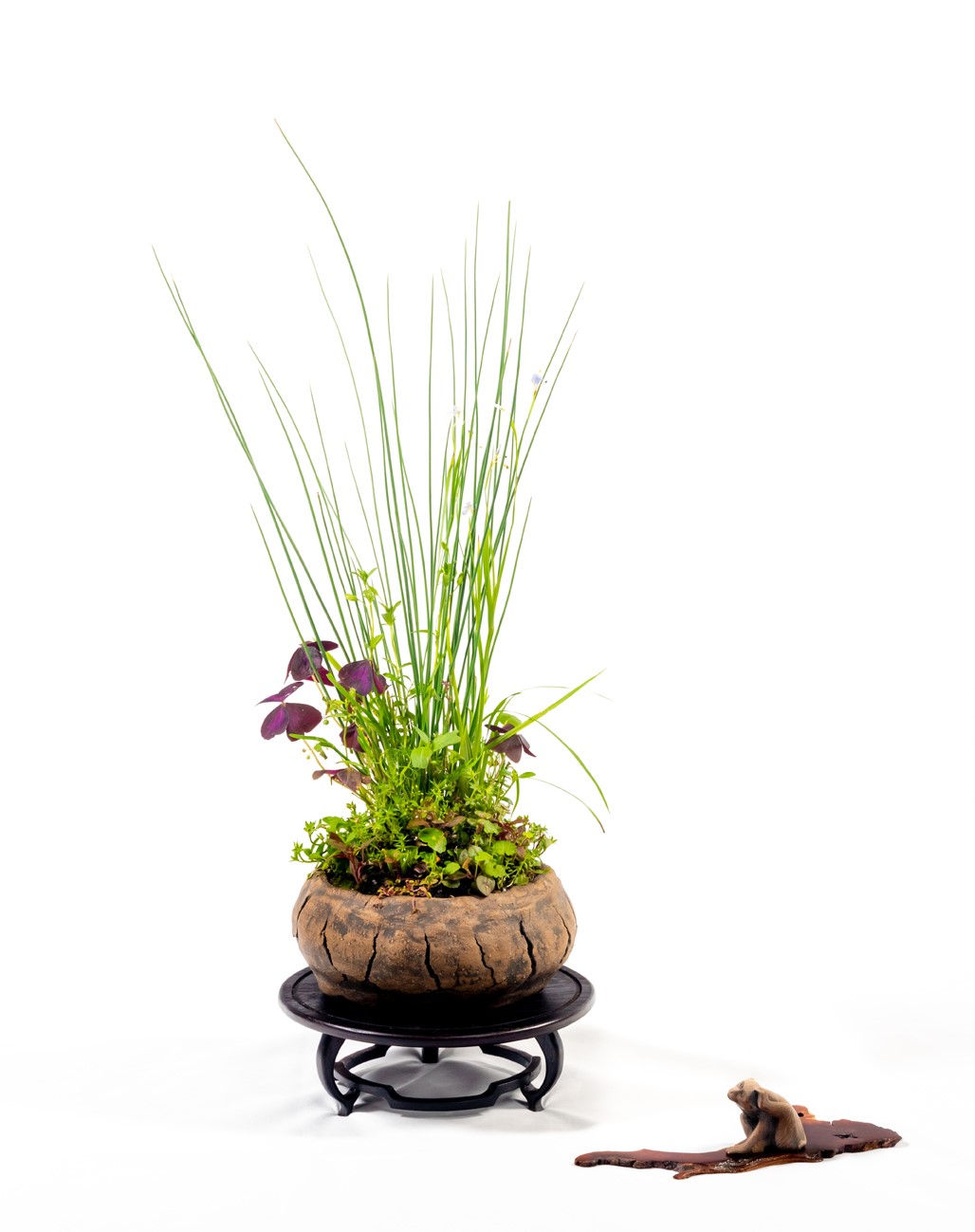A joint blog with Kasu Bonsai (Jose Luis Lopez Casulleras), Spain
Green Island and Green Mound are two very popular Ficus microcarpa cultivars for tropical bonsai. Both have thick leaves. Several internet articles show how to distinguish them by their leaf shapes.
| Green Island Ficus Ficus microcarpa ‘Green Island’ aka Wax Fig, Panda Ficus, Dollar Ficus | Green Mound Ficus Ficus microcarpa ‘crassifolia’ aka Long Island, Wax Fig, Panda Ficus, Korea Ficus | ||
 |  | ||
| Heavy-textured leaves, a little longer than wide, the shape would be described botanically as “orbicular’ with only an obscure tip. | Same heavy texture but more than twice as long as wide; widest a little above the midpoint of the blade (i.e., obovate) with a blunt but obviously pointed tip. |
So the rounder leave ficus is Green Island and the more elongated leave ficus is Green Mound or sometimes called Long Island. Seems simple enough, but there are problems with these names.
In this blog, we will explain the confusions, resurrect their original names based on Taiwan literature, where these two ficus came from.
What Are the Confusions with These Names?
After publishing my blog on the synonyms of Kinmen, Tiger Bark, Kingman, Kimeng, Golden Gate F. microcarpa, Kasu Bonsai (co-author Jose) wrote and asked me to look into how Green Island and Green Mound got their names. As both came from Taiwan, he hoped I could find information in Chinese texts from Taiwan.
The situation is also confusing in Taiwan because some bonsai people simply call both of them ‘Green Island’ ficus such as the winning ficus shown below regardless of whether the leaves are round or elongated. However, a segment of the bonsai people such as the Taiwan Bonsai World no longer lists Green Island as a ficus used for bonsai on their website and lists the rounder leave ficus by its original name, ‘crassifolia’, as described in the literature. On the other hand, people interested in plant identifications are not so confused because their identities are clear in plant field guides. So ‘Green Island’ confusion is largely confined within bonsai circle.

Fortunately, there is an article by H.F. Yan, the curator of the Botanical Garden of the Taichung Museum of Natural Sciences, who is also a bonsai enthusiast and tried to clarify these confusions so that people could call them correctly by their original names. He further noted that ‘Green Island’ Ficus is actually the name of a totally different species, F. pubernervis, which is endemic to Green Island (Lu Dao. Yes, it is the name of a small outer volcanic island in Taiwan); it is so named for where it is found. It is unclear how it got confused with bonsai’s ‘Green Island’. After reading Yan’s article, we further verified their descriptions with photos and illustrations in The Taxonomic Revisions of the Family Moraceae inTaiwan Ed. (II), a monograph by the late J.C. Liao who was involved in the naming these two ficus.
Since Yan’s article is in Chinese and is probably not much read in the West, we summarized his clarifications in this blog. A key feature of Yan’s article is he illustrated and compared the leaves of the four microcarpa cultivars used for bonsai. We added notes for each leaf illustrated.

A: Round thick-leave ficus, called ‘Green Island’ in the West and by some bonsai people in Taiwan. This is a naturally occurring variety found growing on the coastal limestones in the Hengchun Peninsular in southern tip of Taiwan. The plant is a small shrub, sometimes creeping, and has nearly round thick leaves. It was described by W.H.Shieh in 1963 and named ‘crassifolia‘ which means thick leave in Latin. Its Chinese name is ‘Hou Ye Rong’ which means thick-leave ficus. For unknown reasons and don’t know when, the name became ‘Green Island’ and got confused with the actual Green Island F. pubernervis.
Since it is a coastal plant with a compact growth habit, it is a popular low maintenance landscape plant in Florida and was voted 2001 ‘Plant of the Year’ by The Florida Nurserymen and Growers Association.
Detail descriptions and more photos of the leaves, branches, leaf stalk and syconia of ‘crassifolia’ can be found in this online identification guide

B: Elongated thick-leave ficus, called ‘Green Mound’ in the West and by some bonsai people in Taiwan without distinguishing it from the round leave ‘crassifolia’ variety. It was described By J.C. Liao in 1982 as a new cultivar found growing in the I-Lan Agriculture School. Liao named it ‘I-Non’, pronounced like ‘Yi Non’, which is a contracted name of the agriculture school in Chinese. ‘I-Non’ is certainly hard to pronounce in the West and meaningless to most people, which might be the reason why it is called ‘Green Mound’ for its growth form when sold as a landscape plant. Some online Florida nursery trade articles give its scientific name as var. ‘crassifolia’, which is wrong, it should be Ficus microcarpa cv. ‘I-Non’.


C: Large leaf Ficus microcarpa main species.
D: Medium size leaves microcarpa used for bonsai, such as the popular ‘Kinmen’, aka ‘Tiger Bark’. As far as we know, this cultivar has not been described in any scientific journal.
E: Small-leave microcarpa cultivar described and named ‘pusillifolia‘ by Liao in 1989. ‘Pusillifolia‘ means small leaves, it is also called a Melon Seed ficus in bonsai circle. This cultivar was discovered growing in the Botanical Garden of the National Chung Hshing University.
What Should We Call These Two Ficus?
The use of common names is irrelevant in the binomial naming system, they are just for the convenience of we lay people, hobbyists and for nursery trades. However, cultivar and variety names are valid, they are denoted by cv. and var. after their binomial names. ‘I-Non’ and ‘crassifolia’ are cultivar and variety names, respectively.
‘Green Mound’, ‘Green Island’, and several other names like Long Island, Panda Ficus etc., are entrenched common names but not the original names, and it would be very very difficult and near impossible to change. For example, many people still use the name F. retusa for F. microcarpa even it was corrected decades ago.
We propose resurrecting their original names as they were first described. It is a respect to the botanists who discovered and described them. After all, if your parents name you Paul and someone mistakenly call you Peter, wouldn’t you want to correct it and be called Paul?
So…
Round leave variety be called by its original name ‘crassifolia’ or ‘Hou Ye Rong’ which has the same meaning in Chinese but would be more difficult to call or remember by non Chinese speakers. The full name is Ficus microcarpa var. ‘crassifolia’.

Elongated leave cultivar be called by its original name ‘I-Non’ which the original author intended to honor the I-Lan Agriculture School where the cultivar was discovered. The full name is Ficus microcarpa cv. ‘I-Non’.

For taxonomists who took broader views in naming species, called the ‘lumpers’, names like ‘I-Non’, ‘crassifolia’ etc. are not needed for the overall picture, and all these names are relegated to just Ficus microcarpa. For example, Berg and Corner lumped them all into F. microcarpa in their Revisions of Malanesia Ficus.

